



johndoe@gmail.com
Are you sure you want to reset the form?
Your mail has been sent successfully
Are you sure you want to remove the alert?
Your session is about to expire! You will be logged out in
Do you wish to stay logged in?
Please note that you will need to be logged in to view the content featured below
Since the 1970s Brazil has been one of the few countries in the world where the consumption of Brazilian music has exceeded that of music from overseas. Maintaining a constant international presence through bossa nova and trends in música popular brasileira, Brazilian music has been increasingly recognized by both musicians and scholars as having a constitutive role in the musical landscape of the world.
With this collection of freely accessible chapters, we explore the history and significance of Brazilian music throughout the 20th century.

From the mid-20th century to the present, the Brazilian art, literature, and music scenes have been witness to a wealth of creative approaches involving sound. This is the backdrop for Making It Heard: A History of Brazilian Sound Art, a volume that offers an overview of local artists working with performance, experimental vinyl production, sound installation, sculpture, mail art, field recording, and sound mapping. In a chapter by Tânia Mello Neiva, the author discusses the work of selected Brazilian women artists who are very active in the music and sound art scenes, and explores how they have been impelled—through their art and associated creative methodology—to question or try to break with some of the norms that symbolize and reproduce patriarchal and hegemonic values in the fields of experimental music and sound art.
Explore further by reading Tânia Mello Neiva’s chapter “Engaged Sonorities: Politics and Gender in the Work of Vanessa De Michelis" from Making It Heard: A History of Brazilian Sound Art.
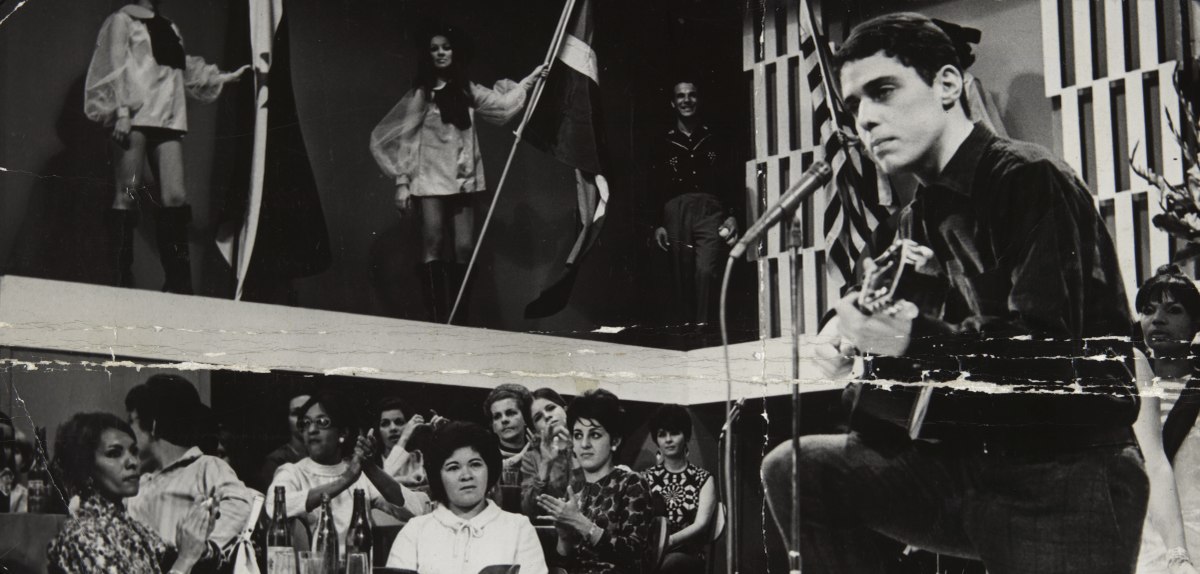
What better way to affirm the out-and-out Brazilian-ness of one’s new album than to begin by employing the country’s most representative musical genre in a rousing rendition with lyrics about the most typical dish of the national cuisine? The opening salvo of the first Chico Buarque is one such affirmation: “Feijoada complete” (Complete bean stew meal) serves up on a sound platter an all-embracing black-bean stew repast, with all the trimmings and side dishes. This A1 track is characteristic of the encompassing collection with its sonic frame, crafted lyrics, elements of popular culture, and connections to other genres and dates. Throughout Chico Buarque’s First Chico Buarque, an entry in the growing 33 1/3 Brazil series, author Charles A. Perrone situates the album in inter-related contexts: the artist's own career; the evolution of Brazilian Popular Music; and, especially, historical conjuncture—his work spanning the period of military dictatorship in Brazil, 1964-85.
Explore further by reading the chapter “Setting the Table, on the Ground” from Chico Buarque’s First Chico Buarque by Charles A. Perrone.
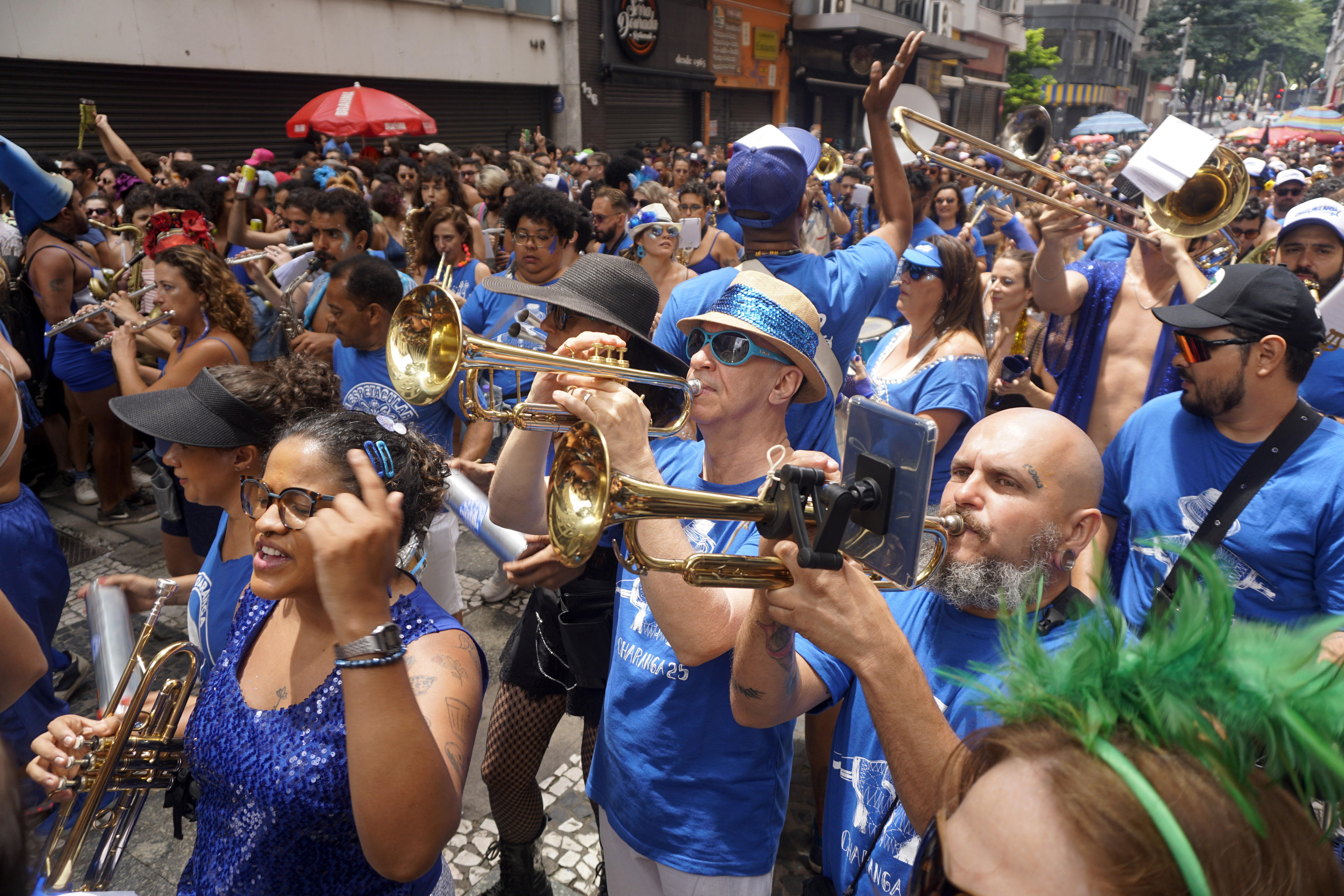
Música caipira is a term used to denote the large group of musical subgenres performed in the rural areas of the “Middle-South” of Brazil—that is, the states of São Paulo, Mato Grosso, Mato Grosso do Sul, Paraná, and the southern areas of Minas Gerais and Goiás. In the 21st century, música caipira is regarded as a basis of Brazilian popular music, one of its most traditional genres. It can be heard in many places in the Middle-South, chiefly at community events such as parties or on specialist radio programs. This genre is at the heart of debate about the transformations that urbanization and modernization have wrought in Brazilian society and Brazilian popular music. For many musicians and critics, the process of modernization that música caipira underwent, and the emergence of música sertaneja, are seen through a negative lens—one that laments the dissolution of many traditions. From this viewpoint, música caipira is a good index of the problems created by the modernization of society. Yet in spite of this, música caipira remains a powerful symbol of Brazilian musical and cultural traditions, in particular those of the Middle-South.
Explore further by reading Allan de Paula Oliveira’s chapter “Música Caipira” from the Bloomsbury Encyclopedia of Popular Music of the World, Volume IX: Genres: Caribbean and Latin America.
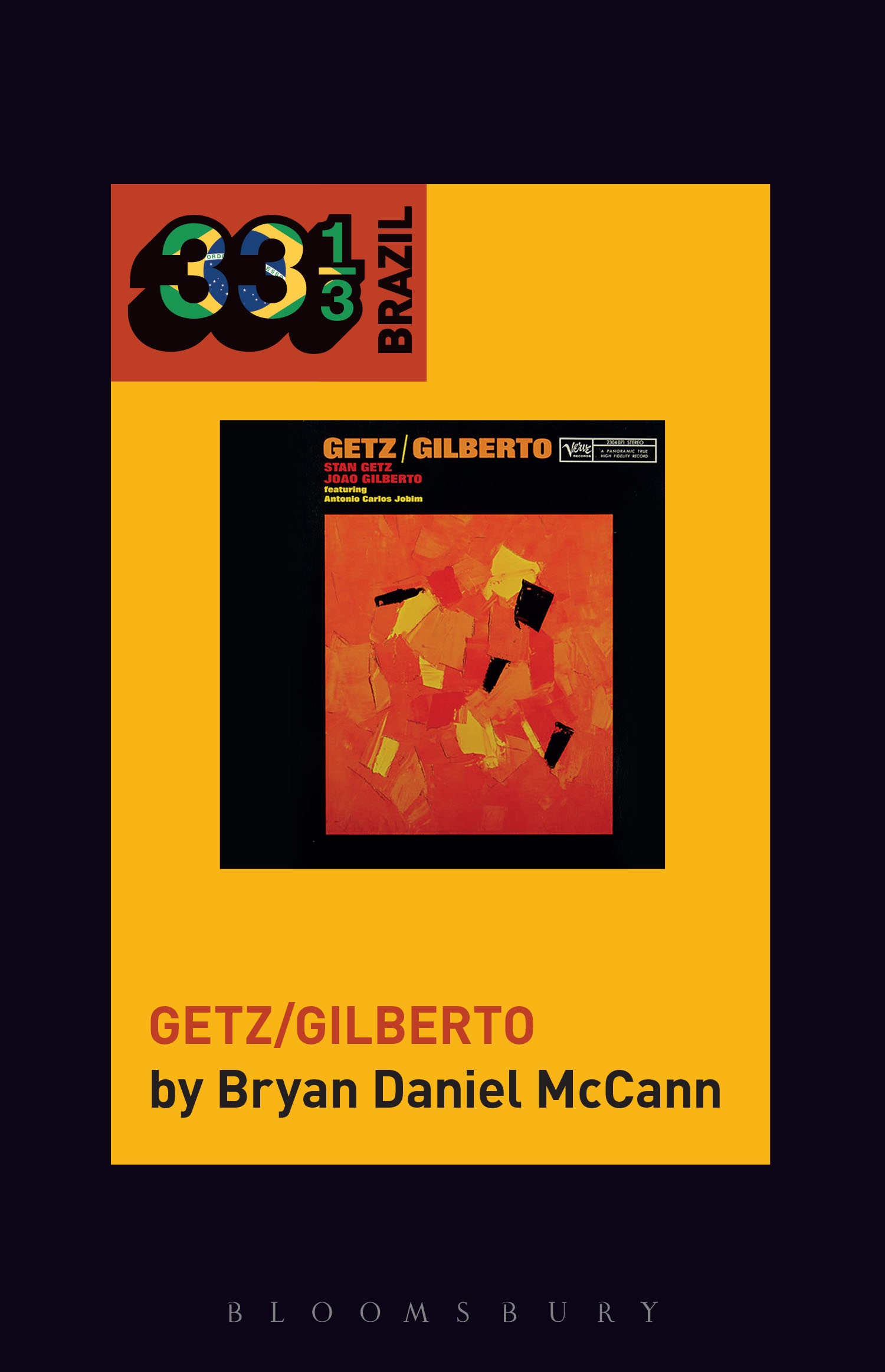
Most die-hard Brazilian music fans would argue that Getz/Gilberto, the iconic 1964 album featuring "The Girl from Ipanema," is not the best bossa nova record. Yet we've all heard "The Girl from Ipanema" as background music in a thousand anodyne settings, from cocktail parties to telephone hold music. So how did Getz/Gilberto become the Brazilian album known around the world, crossing generational and demographic divides?
Bryan McCann traces the history and making of Getz/Gilberto as a musical collaboration between leading figure of bossa nova João Gilberto and Philadelphia-born and New York-raised cool jazz artist Stan Getz. McCann also reveals the contributions of the less-understood participants (Astrud Gilberto's unrehearsed, English-language vocals; Creed Taylor's immaculate production; Olga Albizu's arresting, abstract-expressionist cover art) to show how a perfect balance of talents led to not just a great album, but a global pop sensation. And he explains how Getz/Gilberto emerged from the context of Bossa Nova Rio de Janeiro, the brief period when the subtle harmonies and aching melodies of bossa nova seemed to distil the spirit of a modernizing, sensuous city
Explore further by reading the chapter “Bossa, Race, and Politics” from João Gilberto and Stan Getz's Getz/Gilberto by Bryan McCann.
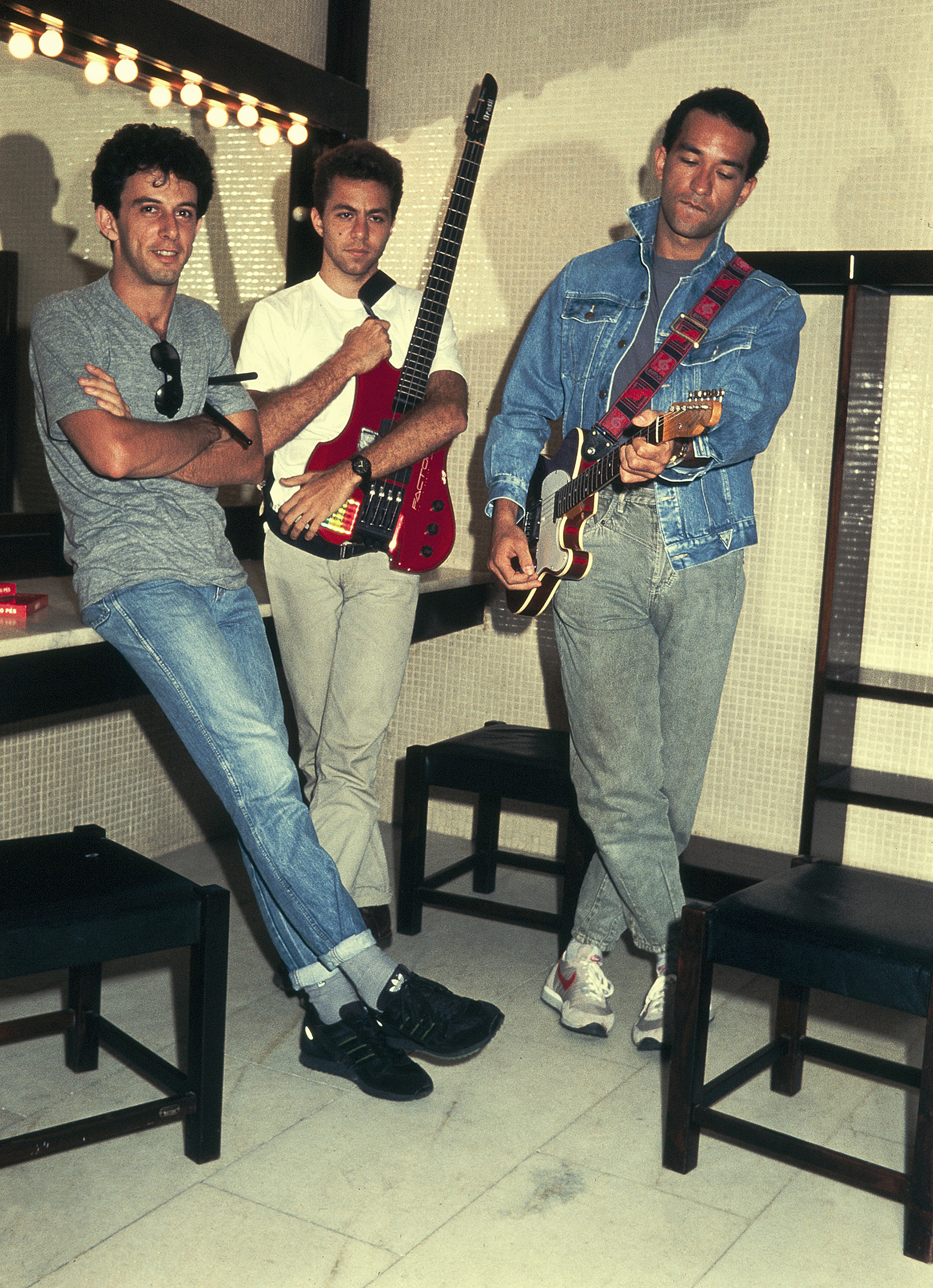
Rock performed by Brazilians dates back to Nora Ney’s 1955 cover of “Rock around the Clock” and Celly Campelo’s 1959 “Estúpido Cupido,” a translation of “Stupid Cupid” presented on the national television show Chacrinha. Brazilian rock, however, began in the early 1960s with a generation of singers influenced by the likes of Elvis Presley, Little Richard, and the Beatles, who popularized a distinctly Brazilian sound. Previously the domain of música popular brasileira, the flag of social protest was hoisted by many rockers. Bands in the 1970s under the dictatorship had their songs censored, and artists were tortured and exiled. It wasn’t until the 1980s that major labels such as CBS, EMI Som Livre, and Warner started to take Brazilian rock seriously. Rio’s Barão Vermelho, São Paulo’s Titãs, and Brasília’s Paralamas do Sucesso and Legião Urbana had gold and platinum disks and, with FM stations like Rádio Fluminense, Rádio Rock, and Transamérica behind them, silenced the decades-old epithets of rockers as alienated, Americanized, and colonized.
Explore further by reading Jesse Wheeler’s chapter "Rock Brasileiro (Brazilian Rock) from Encyclopedia of Latin American Popular Music.
As well as recorded music in various formats and across multiple platforms, live music is central to the musical experiences of many people. For audiences, the live music experience can be linked to fan commitment, feelings of communality, identity construction and cultural exploration. For musicians, performing live, alongside potential economic benefits, provides opportunities to engage with audiences and build a fanbase, demonstrate and develop musicality, and foster perceptions of authenticity. Since the hiatus imposed by the COVID-19 pandemic, the live music industry has in some ways resurged, with the record-breaking revenue from Taylor Swift’s The Eras Tour epitomising the appeal of the superstar arena concert. On the other hand, at a grassroots level, the live music industry is struggling, with small venue closures and cancellations of festivals, at least in the UK. Connecting with audiences and creating a sense of intimacy in live music performances, especially at large scale and online events, is a challenge, but the issues arising from the live music industry extend well beyond this. From the fragile ecosystem of the industry to sexual misconduct at live music events, as well as its environmental impact, the live music industry faces many challenges and is a fascinating and important area of research and activism.
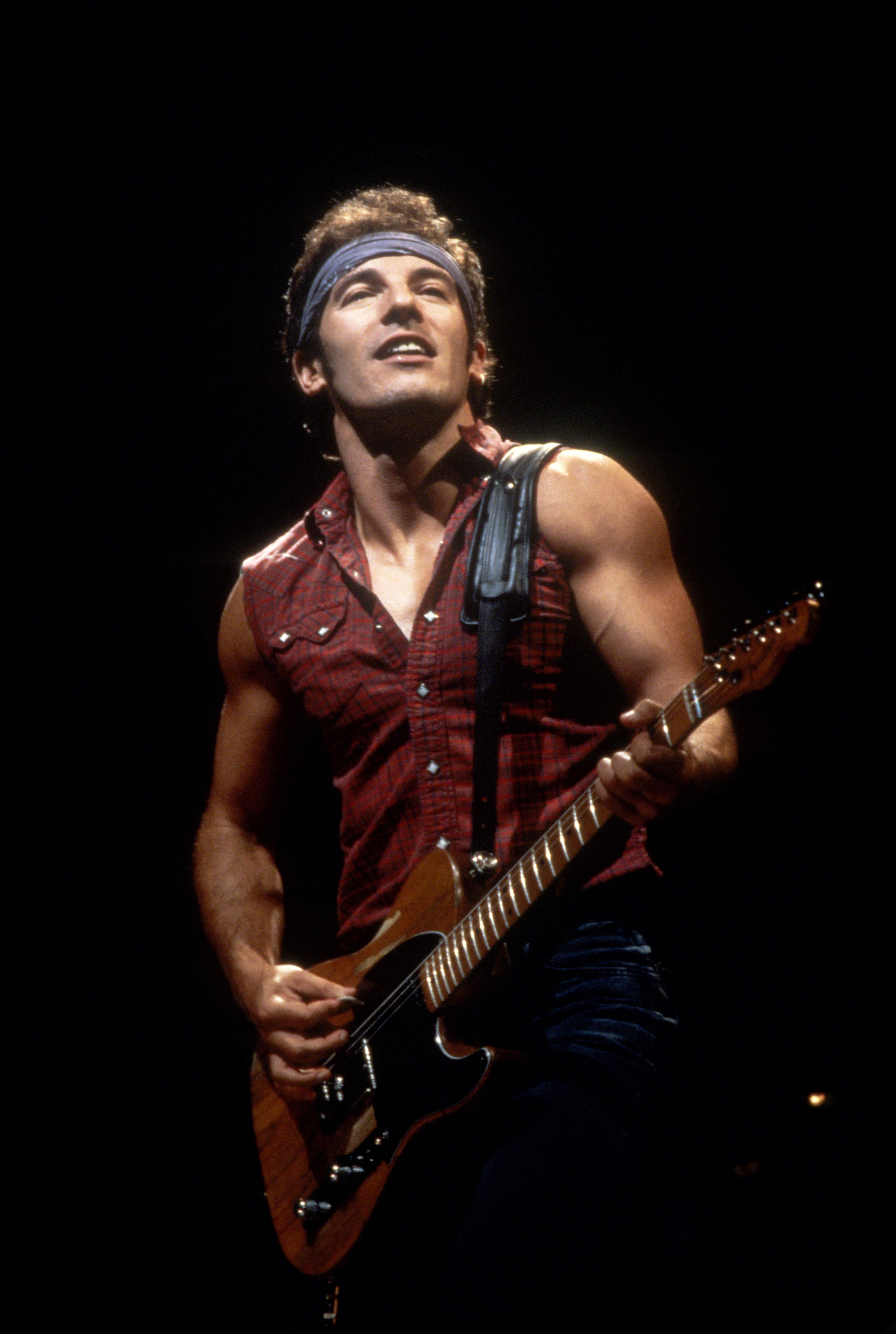
As a mass-produced commodity, it is perhaps surprising that popular music elicits feelings of intimacy with and among audiences. Musical Intimacy explores how intimacy is constructed and perceived in both recorded and live music. Live music is, of course, experienced in a range of contexts. Small spaces can create a feeling of intimacy simply through proximity of audience to artist, while large-scale events rely more on the relationship of the audience with the persona of the performer to create intimacy. Bruce Springsteen, for example, connects with tens of thousands of people in stadium concerts through his legendary ‘everyman’ persona. When the Covid-19 pandemic brought in-person live music to a temporary halt, live music performance flourished on online streaming platforms, with intimacy created through various means, including domestic-seeming spaces and situations, comment and live chat features, and ‘stitched performance’, such as the 2020 fund-raising effort One World: Together at Home, that technologically brought together remote performers, including members of the Rolling Stones, into a unified broadcast. Overall, although constructed, the intimacy that arises in live performance is ideally perceived as authentic. Springsteen in particular is a performer who audiences find to be authentic, in his music and in his physical presence. The argument put forth by Stiegler and Campbell is that audiences seek authenticity both in their experiences of live performance and in their experiences of intimacy.
Explore further by reading Zack Stiegler and Todd Campbell’s chapter ‘Intimacy and live performance’ in Musical Intimacy: Construction, Connection, and Engagement.
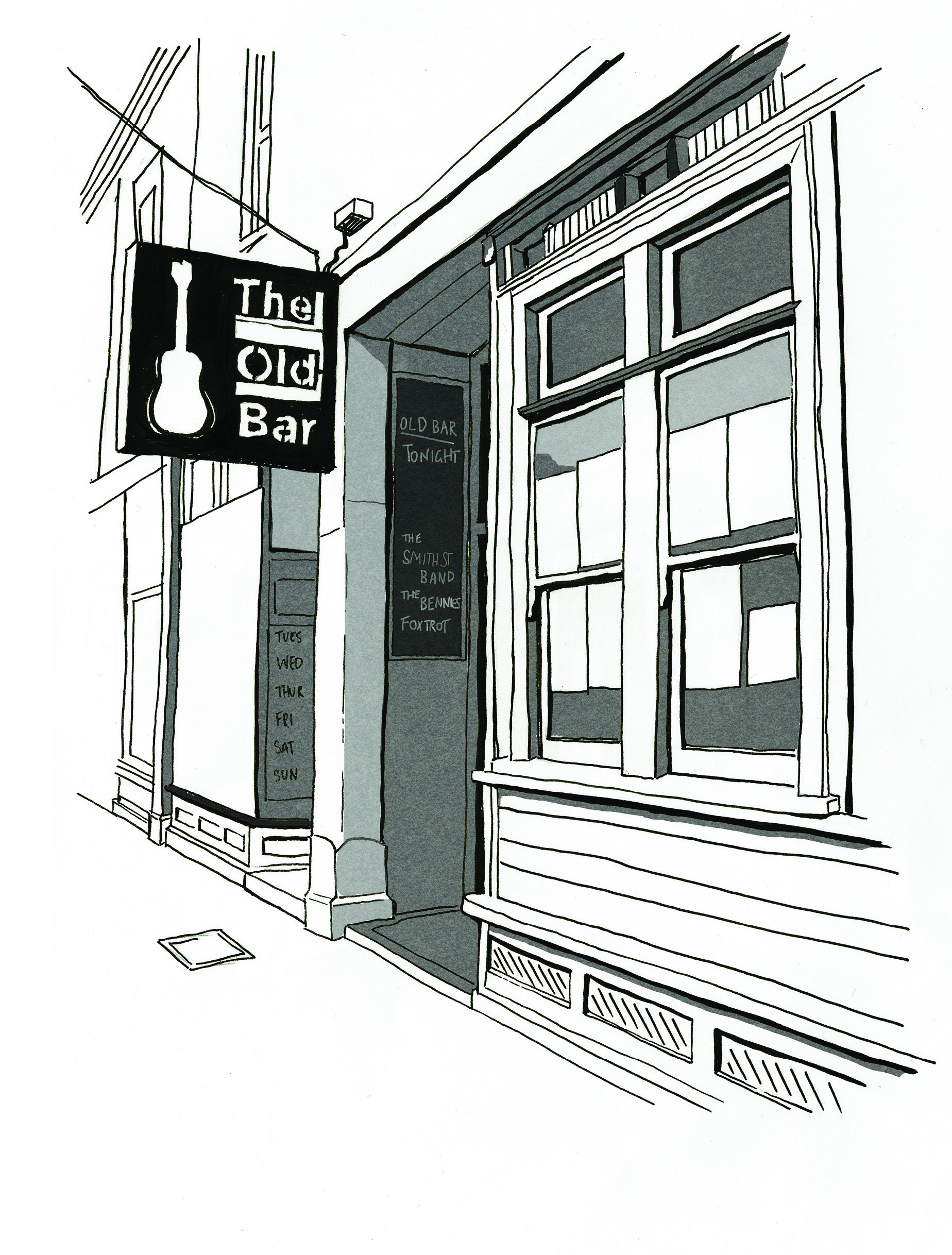
While the spectacle of the arena concert provides ‘favourite gig’ memories for many music fans, for others the small venue setting is vital to the intensity of the experience. Well-known small venues such as the Cavern, the Marquee and CBGB were key in many of the music careers and scenes that dominate popular music historical narratives. As ‘the testing grounds, the hangouts, the place to be’ small venues play a continuing role as performance spaces and networking sites for aspiring musicians, as well as contributing to the cultural economy by employing a wide range of workers frontstage and backstage and in promotion and merchandising. Often run as for-profit small businesses and ‘passion projects’, they walk a line between commerce and culture, existing in a state of financial precarity and, as brick and mortar spaces, are part of and influenced by the built environment and related policies, which are often detrimental. Although they sometimes tend towards niche participation and so can be problematic as social hubs (for example in relation to gender as discussed below), they play an essential role in the infrastructure and ecosystem of local music scenes and the live music industry more widely. In this chapter, Sam Whiting lays out the issues and tensions that are explored in greater depth in the book.
Explore further by reading Sam Whiting’s Introduction to Small Venues: Precarity, Vibrancy and Live Music.
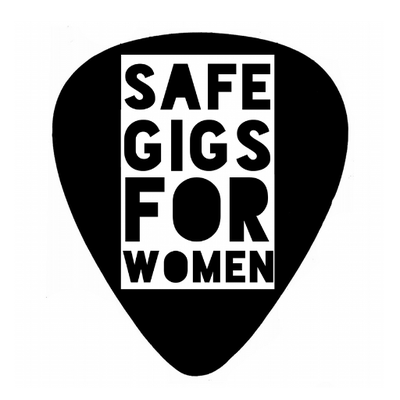
The issue of sexual violence at live music events represents a flipside of the positives of intimacy in live music performance and the value of small music venues. In the context of gender inequality in the music industry and wider society, the live music environment is understood to enable sexual violence in a number of ways. Gender inequality and the gendered norms of certain music scenes lead to male dominance and the marginalization and sexualization of women. In small venues especially, where audiences are standing and often packed closely together, physical boundary norms are overturned, and standard behaviour that is part of some alternative music genres, such as participation in mosh pits, blurs the line between dancing and violence. With factors such as darkness, high volume levels, anonymity, and a lack of supervision thrown into the mix, as well as the normalization of high levels of alcohol and/or drug consumption, the risks are exacerbated further. Bianca Fileborn, Phillip Wadds and Ash Barnes argue that women’s experiences of live music concerts in many music scenes, including those that purport to be progressive, are commonly marred by sexual violence that is facilitated by social, cultural and environmental factors. The devaluation and dismissal of women’s experiences of sexual violence maintain the culture in which it persists, but activist groups such as UK-based Safe Gigs for Women are working to bring about change.
Explore further by reading Bianca Fileborn, Phillip Wadds and Ash Barnes’ chapter ‘Setting the Stage for Sexual Assault: The Dynamics of Gender, Culture, Space and Sexual Violence at Live Music Events’ in Towards Gender Equality in the Music Industry: Education, Practice and Strategies for Change.
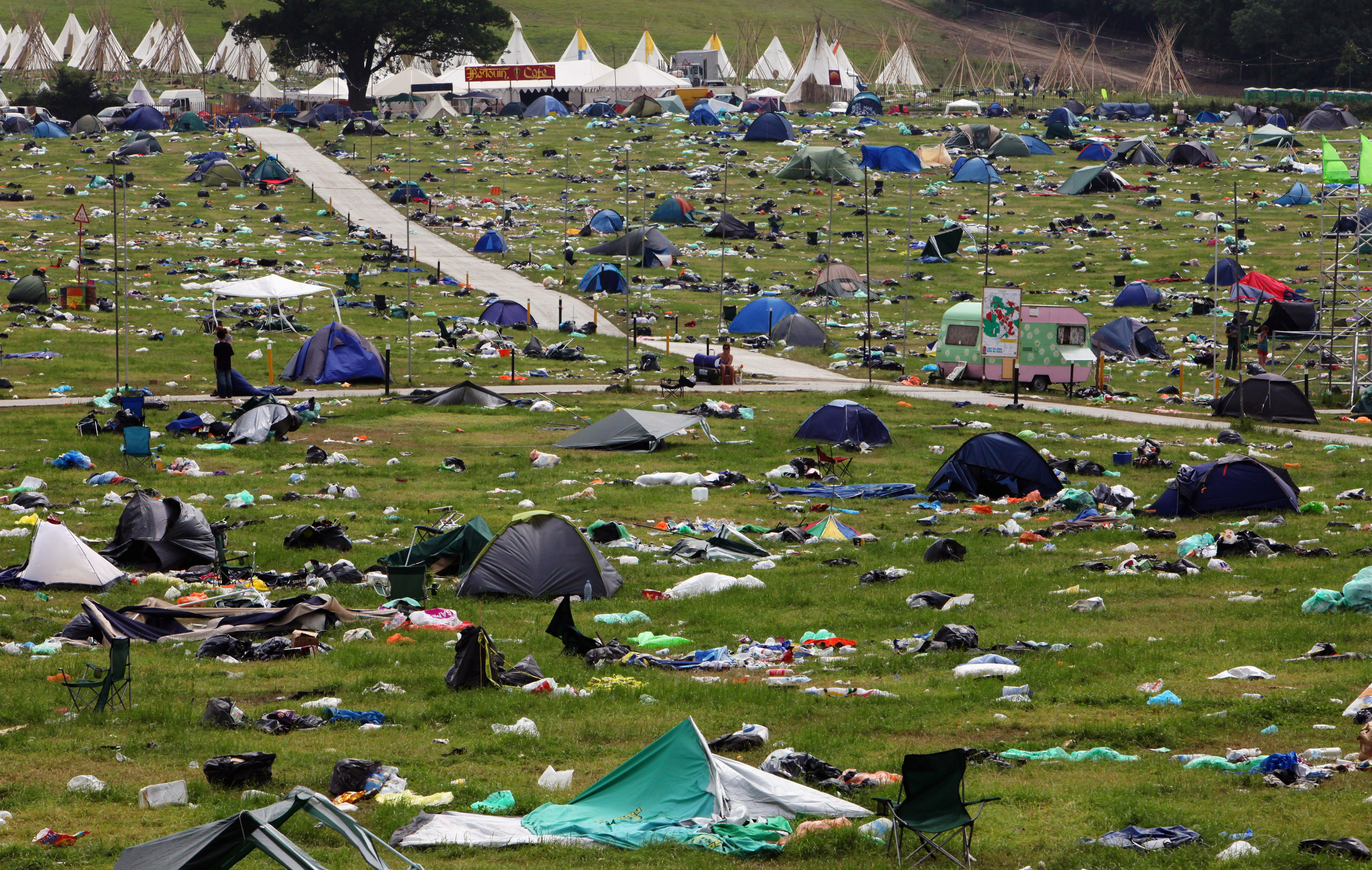
Music festivals ‘used 7 million tons of fuel, generated 25,800 tons of waste and created a carbon footprint of 24,261 tons in the UK alone in 2018’. This stark fact highlights the tension between the growth of the live music industry, a cause for celebration from an economic and cultural perspective, and its environmental impact. The live music industry, especially large-scale festivals on green field sites, is beset with issues relating to energy, water, travel and waste. In relation to UK and EU legislation, the live music industry often leads the way in implementing strategies for positive change, such as initiatives to eliminate single use plastics and reduce food waste, and so-called ‘green riders’ (such as recycling, energy efficiency and carbon offsetting rather than a ban on brown M&Ms). However, while live music industry organisations such as Live Nation are aiming for zero carbon emissions by 2050, infrastructure is lacking to support this, for example in relation to plastic waste recycling. Although the economic effects of Covid-19 on the live music industry were devastating, the shutdown was purely positive for the environment, with waste, emissions and ecological damage dropping to zero. As Teresa Moore argues, ‘No one wants to see an end to live music’, but alignment between legislation and the music festival industry needs to be stronger to bring about change. This chapter highlights what is arguably the most pressing and timely of all the challenges faced by the industry.
Explore further by reading Teresa Moore’s chapter ‘Greening the live music industry’ in The Present and Future of Music Law.
Since the dawn of electronic music in the 20th century, music has been created out of, and responded to, the digital technologies of the era. But the emergence of new AI technologies poses greater questions and problems to artists as the ability to produce AI-generated music in a matter of minutes becomes a reality. What does the future look like for musicians and the industry alike in the face of AI developments? How have artists responded to these technologies? From virtual animation software to AI-generated EDM, from singing and dancing holograms to computer-created mashups, we've curated four chapters examining this relationship with an eye to what the future holds.

In the wake of new digital technologies, artists are able to explore different ways of representing a world where the virtual is becoming an increasingly unavoidable part of reality. Steen Ledet Christiansen, in his chapter from Cybermedia: Explorations in Science, Sound, and Vision, explores the significance of Radiohead using the MASSIVE animation software to create the music video for their single ‘Go to Sleep,’ the same technology used to generate the large-scale battle scenes of Lord of the Rings. Through this example, Christiansen examines how artists in the 21st century have adopted digital technologies as a crucial and core part of understanding the world around us, as well as a way to express the growing importance of the digital in our lives.
➜ To learn more, read Steen Ledet Christiansen’s chapter “A MASSIVE Swirl of Pixels: Radiohead’s “Go to Sleep”” from Cybermedia: Explorations in Science, Sound, and Vision.

Throughout its history, electronic dance music (EDM) has always involved collaboration between human and machine, the biological and the nonbiological. However, developments in AI technologies have blurred the boundaries between these defined roles as we enter an era of generative AI that can itself create music. Andrew Fry argues that these developments may soon (or may already) compel the machine to become the artist, breaking free from the limitations of biology, while the human becomes the tool, supporting the machine artist in their creative endeavours. To explore this as a possibility, Fry takes as his example the role of AI within EDM, specifically outlining the dynamic between the biological and the nonbiological.
➜To learn more, read Andrew Fry’s chapter “EDM, Meet AI: Cognitive Tools and (Non)biological Artists in Electronic Dance Music” from The Evolution of Electronic Dance Music.

Can digital technology prolong the artist’s life, even after death? The surge of interest in hologram concert performances by deceased artists has pushed the limits of this question, with famous performances by Tupac Shakur, Michael Jackson, and Roy Orbison all trading heavily upon notions of nostalgia, heritage, and the mythology of the deceased performers. These performances are often estimated to have cost multiple millions of dollars, even for as little as a four-minute performance. In Alan Hughes’ chapter from The Future of Live Music, he explores the commercial success of these tours, the increased sophistication of hologram technology used, and addresses the future of live music through the medium of stage hologram performances.
➜To learn more, read Alan Hughes’ chapter “‘Death is No Longer a Dealbreaker’: The Hologram Performer in Live Music” from The Future of Live Music.

The recent rise in popularity and sophistication of generative AI has many musicians wondering: how long until these computer algorithms replace humans in the creation of new music? Will tomorrow’s musicians be competing with robots for the top of the Billboard charts? Although AI tools to create entirely original music currently exist (and have existed for more than half a century), the general rise in popularity of AI has recently brought this concept to the forefront of the public mind. In their chapter from Remediating Sound: Repeatable Culture, YouTube and Music, authors Christine Boone and Brian Drawert explore the concept of AI-created art with regards to a single genre of music: mashups. A mashup is a new song created by blending two or more pre-recorded songs, a process that can be easily replicated by generative AI systems. In the process, Boone and Drawert provide an examination of the current state of AI-created music at its most rudimentary, and predict what this could mean for the future of music creation.
➜To learn more, read Christine Boone and Brian Drawert’s chapter “‘Technology Allows More People to do Things’: Artificial Intelligence, Mashups and Online Musical Creativity” from Remediating Sound: Repeatable Culture, YouTube and Music
Homepage image credit: A holographic image of Michael Jackson performs onstage (Kevin Winter/Billboard Awards 2014 / Getty Images)
What is Asian American music? We tend to try to categorize music into genres and styles, periods and places. But given that Asian American contributions to music bridge these qualifiers, this is an impossible question to answer. The Asian American movement of the 1960s and 1970s helped to create solidarity for Asian Americans across ethnicities, but the histories of Asian Americans and Asian American musicians are wide-ranging and diverse. From Japanese Breakfast to Mitski and from Karen O to Bruno Mars, we see the impact of Asian American musicians across musical spaces.
Rather than define Asian American music and sound, we can recognize the variety of musical contributions made by Asian Americans, Pacific Islanders, and Native Hawaiians.

Often played at raves and nightclubs, and including subgenres ranging from house music to techno to dubstep, electronic dance music was a major part of the 1980s musical landscape, as it is still today. However, the EDM space has been predominately homogeneous and occupied by mostly white, middle-class participants. Raves and festival scenes are theoretically rooted in an acceptance of all, but the lack of diversity tells a different story.
Judy Soojin Park discusses the recent increase in young Asian American participants in the EDM space. The chapter focuses in particular on events organized by Insomniac Events in Los Angeles and the ways in which they have adopted the ideology of PLUR (Peace, Love, Unity, and Respect). Using interviews with young Asian Americans in the EDM community, this chapter discusses how Asian American “otherness” has not discouraged but rather motivated their involvement in EDM festivals. Through these interviews and analysis, the chapter explores themes of belonging and authenticity.
➜ To learn more, read Judy Soojin Park’s chapter “Searching for a Cultural Home: Asian American youth in the EDM Festival Scene” from Weekend Societies: Electronic Dance Music Events and Event-Cultures.

Japanese American writer Karen Tei Yamashita is known for exploring in her work themes of border crossing and migration. Her stories span Asia, Europe, and the UK, and draw from her personal history. Recipient of the National Book Foundation 2021 Medal for Distinguished Contributions to Literature, she is credited with helping to re-shape Asian American literature and literary studies.
Nathalie Aghoro’s chapter in The Acoustics of the Social Page and Screen explores Karen Tei Yamashita’s novel Tropic of Orange. A work of magical realism, the book assesses the connections of a diverse 1992 Los Angeles in the face of disaster — and the way sound and listening influences the trajectory of its characters. Aghoro analyzes Yamashita’s characters in the context of heterogeneity and social change, and highlights the impact of sound on socio-political boundaries.
➜ To learn more, read Nathalie Aghoro’s chapter “Sonic Sites of Subversion: Listening and the Politics of Place in Karen Tei Yamashita’s Tropic of Orange” in The Acoustics of the Social on Page and Screen.

Music of specific ethnic groups is often, and sometimes problematically, characterized by generalizations related to common practices and styles. However, to this effect, there is very little consensus on what Asian American music is or isn’t. Asian American musicians, like all musicians, create, influence, and are influenced by a huge range of contemporary styles.
Runchao Liu identifies a predominant thread in Asian American affect, however, as it relates to musical activism — tied to an unconventional nondominance. Liu argues that rather than being timid or weak, this style evokes an exceptional power. The essay uses the case studies of two Cambodian American musicians to demonstrate the potency related to this style of activism and its emotional honesty.
➜ To learn more, read Runchao Liu’s chapter “Unconventionally Confrontational: Radicalized Asian Affects, Diasporic Aesthetics and the Revival of Cambodian (American) Rock Music” in The Bloomsbury Handbook of Music and Art.

Native Hawaiian artist Israel Kamakawiwoʻole was best known for his signature ukulele sound and the medley “Somewhere Over the Rainbow/What a Wonderful World.” The well-known track was featured on his 1993 album, Facing Future, which would become the best-selling album of all time by a Hawaiian artist and was certified platinum in 2005. He received global recognition when his song, some years later, was used in commercials and movies. His legacy includes not only his music but his work utilizing his music towards the preservation of Hawaiian culture and rights.
Dan Kois discusses the history and lasting influence of this album. He explores Iz’s career, life, and challenges, and his journey to becoming a musical icon. He goes on to discuss the frequent licensing of the song, its impact on Hawaiian identity and society, and who profited from his music and why.
➜ To learn more, read chapter one, “Drive with Aloha,” and chapter two, “Local,” from Israel Kamakawiwo'ole's Facing Future by Dan Kois.
by Mads Krogh, Aarhus University Denmark
Within the past five years, broadcast corporations around the world have marked their centenary milestones. Radio, a key component of 20th-century mass-media modernity, has successfully transitioned into the digital age and continues to inform, entertain, and shape audiences. It sets the tone and cadence of intimate daily living while resonating in the broader realms of media, politics, and commerce.
With this collection of freely accessible chapters, we explore the significance of radio, especially for fostering communities. Special attention is given to music radio, a pivotal though sometimes underacknowledged aspect of what has propagated through the airwaves.

Radio is the medium of nation building par excellence. For the national broadcasting corporations established from the 1920s onwards, this was a main task. Radio provided a new means of addressing the nation, communicating to the public in real time, ‘as one’. Still, the task of creating and maintaining a sense of national identity proved challenging, for example, in the face of geographical or sociocultural distance and against local or transnational operators. This is demonstrated by J. Mark Percival in his exploration of the relation between music radio, space and place. Looking at the development of public service radio in Canada and Britain, he notes how superimposing a sense of a coherent national scene – an imaginary ‘national-place’ – over the potentially vast and disparate space of the nation-state is how political stakeholders gave radio a role in nation-building. Moreover, fending off external threats to the imagined national community has involved the delicate balance of incorporating strategies from transnational, e.g. commercial, operators into the national broadcasting corporation. Certainly, this disbands any simple notion of broadcasting (to) the nation.
Explore further by reading J. Mark Percival’s chapter ‘Music radio’ in The Bloomsbury Handbook of Popular Music, Space and Place.
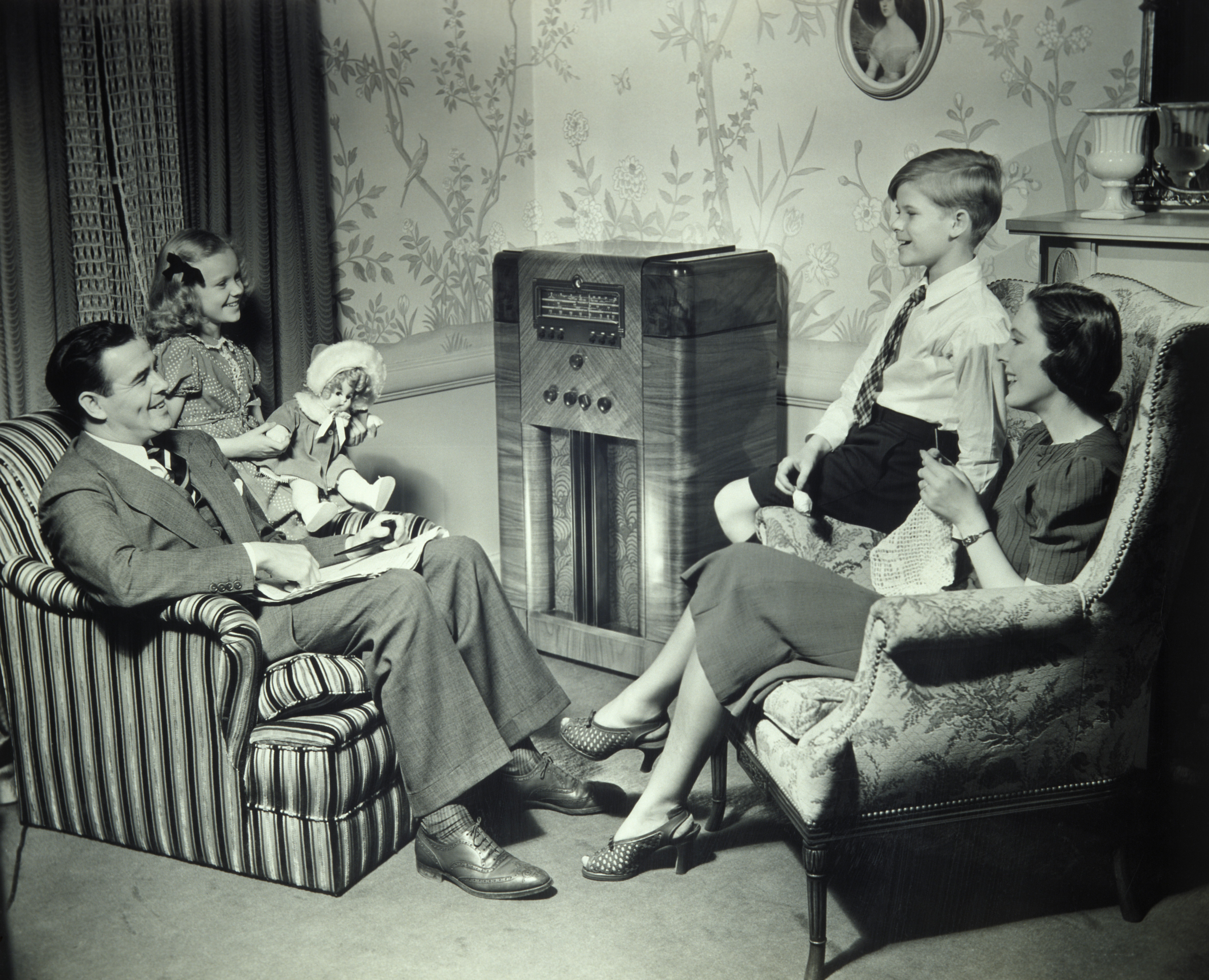
The spread of radio from the 1930s as a household item coincides with the rise of middle-class tastes or, more precisely, it initiates a development, where ‘middlebrow’ gradually comes to signify a taste of its own (as opposed to being merely that which is neither high- nor low-brow). This is argued by Morten Michelsen, who details the multiplicity of musical genres scheduled by European operators in the 1930s, while noting that light music, parlor music, and modern dance music came to be ‘the bread and butter’ of music radio programming. This dominance of the airwaves by genres appealing to middle-class audiences contrasted with the official preoccupation by radio corporations with art music; that is, the promotion of highbrow tastes which offered a central means of legitimization in a time where education was considered the raison d’etre of public service radio. The juxtaposition and implied comparability of genres combined with the prominence of music representing middlebrow tastes nevertheless worked to showcase the latter as having a sense and significance of its own. To Michelsen, this marks the first phase in a history which encompasses other media institutional and musico-cultural developments (e.g. the 1960’s advent of rock criticism), while from the perspective of radio studies it provides a central case of radio’s potential for aggregating large-scale social communities based on class and taste.
Explore further by reading Morten Michelsen’s chapter ‘Being In-Between: Popular Music and Middlebrow Taste’ in The Bloomsbury Handbook of Popular Music and Social Class

In many countries, deregulation of frequencies and ideals about democratic and participatory media engagement have paved the way for community radio stations. Contrary to national broadcasting corporations and commercial networks, these often play a key role in voicing the concerns of local groups. In his chapter “Migrant radio, Community, and (New) Fado: The Case of Radio ALFA”, Pedro Moreira explores a station that is commercial, but which serves the Lusophone (i.e. Portuguese-speaking) community living in France, and specifically in a way that reflects the reality of this group. As such, Radio ALFA not merely represents the motherland to (and as imagined by) those living abroad but conveys instead a migrant Portuguese identity situated in the context of everyday contemporary France. The musical genre of (new) fado takes on particular significance in this regard. A genre of hybrid origin – mixing Afro-Brazilian and Portuguese inspirations – fado was picked up by the transnational music industries, circulated as world music and, thus, accorded a sense of cosmopolitanism. To Radio ALFA, promoting (new) fado offers a way of associating with this successful, traditional Portuguese yet contemporary and cosmopolitan cultural expression; that is, it offers a way for the station to articulate a sense of a vibrant and forceful migrant identity for the Lusophone community.
Explore further by reading Pedro Moreira’s chapter ‘Migrant Radio, Community, and (New) Fado: The Case of Radio ALFA’ in Music Radio: Building Communities, Mediating Genres

From the perspective of radio production, the appeal to different audiences is often thought about as a matter of formats – for example, talk radio, sports radio, contemporary hit radio, urban, or album-oriented rock. Formats streamline programming – i.e. the choice of music, news, style of presenters, sound of jingles, commercials etc. – according to the tastes of target audiences, whose attention is in turn sold to advertisers or mobilized to please political stakeholders. How such streamlining is achieved in the day-to-day workings of a radio station is a question that lends itself to detailed media ethnographic inquiry, as demonstrated by Katrine Wallevik. In her account of ‘Godmorgen P3’, a breakfast program aired by the Danish Broadcasting Corporation, she unravels the multiplicity of (f)actors engaged in program production. A host of human ‘accomplices’ take up different roles: researching, planning, playlisting and presenting. They employ a wide range of tools and technologies, thus enacting a complex human-non-human network. This constitutes a working culture but also a milieu of matter and meaning. Pursuing transactions in this milieu, such as the implication by programmers of scheduling software in producing musical flow, Wallevik unfolds a range of themes and, more fundamentally, onto-epistemological complexities in the apparatus that makes ‘Godmorgen P3’ cohere.
Explore further by reading Katrine Wallevik’s chapter ‘The Software’ in The Bloomsbury Handbook of the Anthropology of Sound

Whatever communities are assembled in or by radio, a basic question concerns the affective attachment or emotional investment that causes people to engage with the medium. What constitutes the love or at least affection for radio? In her book Radiophilia, Carolyn Birdsall provides a nuanced answer to this question, suggesting that loving should be understood as a site of action and practice – a site that transcends the listener’s individual relationship to the medium or to specific radio programs or stations, while encompassing instead a range of group practices and social moods. She lists a broad range of radio’s attractions, from its technological media qualities and types of content to the social uses developed by audiences, all of which afford diverse listener engagements. The concept of affect lends itself to thinking about both the emotional intensity and more-than-individual (i.e. agentially dispersed) character of engagements. Moreover, advocating the concept of affective practice, Birdsall stresses the way affects are to some extent cultivated in embodied, habitual and, again, social ways. This leads her to identify and – in the course of the book – explore a broader range of practices (knowing, saving, sharing), which associate and articulate the love of radio.
Explore further by reading Carolyn Birdsall’s chapter ‘Loving’ in Radiophilia
How are sound and space linked? How do they work together?
This content is available in our Sound Studies collection.
How does the space in which music is played recontextualise that music, changing the way it is interpreted and received by audiences? In the latter half of the 20th century, artist Max Neuhaus introduced the concept of the ‘sound installation,’ a musical endeavour in which sounds are “placed in space rather than time.” By transforming the environment in which music and sound is performed into an intentional, curated facet of the experience, these performances acquire a new spatial dimension to be grappled with. Jordan Lacey’s chapter from The Bloomsbury Handbook of Sonic Methodologies explores the questions brought forward by this spatial form of music, and the ways in which installations can be used as an artistic tool in the future of music and sound.
Read Jordan Lacey's chapter, 'Sound Installations for the Production of Atmosphere as a Limited Field of Sounds' from The Bloomsbury Handbook of Sonic Methodologies to find out more.

Until the dawn of the 1900s, music was a transient and ephemeral event; it disappeared when it was finished, and existed only with a specific framework of time. With the development of recording techniques, however, all this changed. According to legendary electronic composer Brian Eno in his chapter from Audio Culture: Readings in Modern Music, recording takes music out of the time dimension and places it in the dimension of space. It transforms what was once fleeting into something that is repeatable, enabling you to listen again and again to a performance in a way that is detached from the confines of the past, existing in a space that is always now.
Check out Eno's chapter, 'The Studio as a Compositional Tool', to learn more.
How does being in a specific place change our relationship with the music that we hear? How do space and time unfold together in our auditory imagination? And how does our experience of sound and space change when listening to music or sound art where field recordings, the sounds of everyday life, are incorporated within the piece? In her book Listening to Noise and Silence: Towards a Philosophy of Sound Art, Salomé Voegelin undertakes a philosophical study of time and space to grapple with these complex questions of how we experience sound.
Click here to read more from Salomé Voegelin’s chapter 'Time and Space'.
Acoustic design, the architectural pursuit of shaping the movements of sound through space to either minimise noise or harness the specific characteristics of that sound, provides a physical and practical basis upon which to study the relationship between space and sound. Perhaps among the most obvious examples we might think of are the soundproofed room or the concert hall; spaces designed to address an existing or anticipated sound event, albeit in opposite ways. But what about less obvious examples, spaces where sound and music are present, but not as the main event? In one chapter from Brandon LaBelle’s book Acoustic Territories: Sound Culture and Everyday Life, the author turns his attention to the shopping mall. Labelle delves into the “ambient architecture” of the shopping mall, exploring the ways in which it uses music and sound to construct an environment that serves its greater purpose, that of consumerism.
Click here to read more from Brandon LaBelle’s chapter ‘Shopping Mall: Muzak, Mishearing, and the Productive Volatility of Feedback'.
You know their songs, their voices; you see them on TV and hear them on the radio. But what does it really mean to be a celebrity, what kind of role do they play in shaping society and culture as we know it today? From the significance of the Eurovision Song Contest in political policy to the complicated nature of ‘celebrity feminism,’ from the legacy of dead celebrities to the addiction narratives of global rock stars – we’ve curated five star-studded chapters delving into how the idea of the celebrity plays a pivotal role in influencing the music and culture of our times.
You can also explore a range of other topics, artists, and countries previously in focus on the Bloomsbury Music and Sound platform on our featured content archive page.

Music has always held a mirror to the world from which it emerges. Socio-political anxieties find themselves voiced in the form of song, and these songs in turn can have a drastic and very real impact on large-scale political issues. The role of the musical celebrity, then, is often deeply bound to questions of cultural climate and political policy.
In Postwar Europe and the Eurovision Song Contest, Dean Vuletic explores this idea in light of how the Eurovision Song Contest has reflected and become intertwined with the history of postwar Europe from a political perspective. Eurovision is, he argues, ‘Europe’s biggest election,’ providing a platform upon which battles between capitalists and communists, Europeanists and Eurosceptics, reactionaries and revolutionaries have been played out – with musical performers being front and centre of these ideological battles.
Read Vuletic’s chapter ‘The Values of Eurovision,’ examining the role of Eurovision in shaping European political policy and cultural values.

The music from the swing era of the 1930s and 1940s laid the foundations for musical stardom as we know it today. Performers such as Louis Armstrong, Benny Goodman, and Duke Ellington experienced immense success throughout the entertainment industry, each becoming household names in a way that is comparable to that of today’s stars, and firmly cementing the idea of the celebrity in popular culture.
With the rise of the electro swing genre – a contemporary form of dance music built around samples from the swing era – one might expect this emphasis on celebrity status to have translated across to the emerging artists utilising the music of these original performers. And yet, as Chris Inglis argues in his chapter from The Evolution of Electronic Dance Music, this is not the case at all. Instead, when a remix of the likes of Armstrong, Goodman, or Ellington is heard, it is these artists who are invoked in the mind of the listener rather than the musician who has repurposed their work. As a result, the original stars of the swing era are in many ways enjoying a form of ‘second-hand stardom,’ reaching into the future to overshadow the acclaim that may otherwise be enjoyed by the adapter of their music.
Read Inglis’ chapter ‘Second-hand Stardom: Connotations of Sampling for Electro Swing’ to discover more about the complexity of celebrity status in the electro swing genre, as well as the broader implications of what this means for notions of celebrity in the 21st century.

How do female artists in the music industry engage with, promote, or complicate feminist ideas? Is the idea of ‘celebrity feminism’ – the way in which feminism is appropriated and endorsed by celebrities – inherently negative? Or do celebrity ambassadors for gender equality ultimately benefit the cause more than they harm it?
These questions delving into the complex relationship between feminism and celebrity are explored throughout Kirsty Fairclough’s chapter ‘Soundtrack Self: FKA Twigs, Music Video, and Celebrity Feminism’ from Music/Video: Histories, Aesthetics, Media. Through detailed analysis of FKA Twigs’ self-directed music video for her 2014 single ‘Pendulum,’ Fairclough provides a fresh perspective on the ways in which female artists are able to visually represent their own identities in audiovisual cultures, and at the same time grapples with the contradictions and pitfalls of ‘celebrity feminism.’
Read Fairclough’s chapter ‘Soundtrack Self: FKA Twigs, Music Video, and Celebrity Feminism’ to discover more.

The death of a celebrity is always tied to notions of legacy. Though the individual themselves has passed, the ‘idea’ of the celebrity – their work, the circumstances of their life and death, the things they stood for in the public eye – these things live on. And celebrities of large enough fame and stature are often elevated to a kind of mythic status, such as in the case of Elvis, Freddie Mercury, or Janis Joplin.
This process of posthumous celebrity myth-making reveals a great deal about Western conceptions of the celebrity both in life and death, particularly with regards to the stars of the music industry. In Christopher Partridge’s chapter ‘Transfiguration, Devotion and Immortality’ from his book Mortality and Music: Popular Music and the Awareness of Death, the author explores this idea in light of notions of religious transfiguration and idolatry. Much like how the figure of Jesus Christ can be separated into both the Christ of faith and the Jesus of history, so too, the author argues, is the figure of dead Elvis in popular culture a different being than the Elvis of historical fact.
Read Partridge’s chapter on ‘Transfiguration, Devotion and Immortality’ to discover more about the ways in which the legacy of musical celebrities continue to haunt and shape popular culture from beyond the grave.

Drug abuse and addiction have come to be seen by many as par for the course of a rock ‘n’ roll celebrity lifestyle. The dramatic trajectory of excess to illness, of relapse to recovery, is a narrative firmly situated in the public’s perception of rock stars. It is no surprise, then, to see the rise of ‘rock ‘n’ recovery’ autobiographies detailing this journey from the perspectives of stars such as Eric Clapton, Marianne Faithfull, and Anthony Kiedis.
But, given the complicated location of addiction within disability studies, how do these ‘rock ‘n’ recovery’ narratives engage with and elucidate notions of disability and celebrity? Where do they sit among the wider body of disability narratives? In Oliver Lovesey’s chapter ‘Disenabling Fame: Rock ‘n’ Recovery Autobiographies and Disability Narrative’ from Popular Music Autobiography, the author argues that these narratives form a distinct subgenre within disability studies; one that grapples with both altruistic and self-serving motives lying behind their creation, their hybrid genre, their construction of self, and – above all – their highly ambivalent relationship to fame.
Read Lovesey’s chapter ‘Disenabling Fame: Rock ‘n’ Recovery Autobiographies and Disability Narrative’ to learn more about the relationship between conceptions of disability and celebrity in the rock ‘n’ roll autobiography.
The relationship between music and philosophy is a close and interconnected one. Music can be used as a way of expressing and comprehending complex philosophical concepts, whilst the work of philosophers throughout history can further our understanding of music and sound – how it works, how we experience it. From the theories of Žižek to those of Deleuze, from silence to noise, from the Chinese philosophy of Qi to that of Pearl Jam – we’ve curated six chapters examining this fascinating dynamic between music and philosophy.

After Sound considers contemporary art practices that reconceive music beyond the limitations of sound. Music and sound are, in G Douglas Barrett’s account, different things. While musicology and sound art theory alike typically equate music with pure instrumental sound, Barrett sees music as an expanded field of artistic practice encompassing a range of different media and symbolic relationships. In light of this, the works discussed in the chapter “IDEAS MATTER”: Žižek Sings Pussy Riot use performance, text scores, musical automata, video, social practice, and installation in order to articulate a new and radical form of musical practice. Coining the term “critical music,” Barrett examines a diverse collection of art projects which intervene into specific political and philosophical conflicts by exploring music’s unique historical forms.
Read G Douglas Barrett’s chapter “IDEAS MATTER”: Žižek Sings Pussy Riot, which interprets the radical conceptual music of Pussy Riot through the lens of Slavoj Žižek’s philosophical work on the materiality of the violent threat.

How can the philosophical work of Gilles Deleuze help us cultivate a greater understanding of music? Does his work, where rigorously applied, have the potential to cut through much of the intellectual sedimentation that has settled in the field of music studies? Deleuze is a vigorous critic of the Western intellectual tradition, calling for what he calls a ‘philosophy of difference’. For Deleuze, ‘difference’ is not just a distinguishing factor between two things that are not the same, but a condition or state of being in which a subject makes itself distinct from all else. He is convinced that Western philosophy fails to truly grasp (or think) through difference, and as a result longstanding methods of conceptualizing music are vulnerable to this radical Deleuzian critique. But, as Deleuze himself stresses, more important than merely critiquing established paradigms is developing ways to overcome them, and by using Deleuze's own concepts this collection aims to explore that possibility in the field of music.
Read Sean Higgins’ chapter ‘A Deleuzian Noise/Excavating the Body of Abstract Sound’ on the conceptualisation of noise.

Marking the first discussion of the band in a scholarly context, Pearl Jam and Philosophy examines both the songs (music and lyrics) and the activities (live performances, political commitments) of one of the most celebrated and charismatic rock bands of the last 30 years. The book investigates the philosophical aspects of their music at various levels: existential, spiritual, ethical, political, metaphysical and aesthetic. This philosophical interpretation is also dependent on the application of textual and poetic analysis, with this interdisciplinary volume of work putting philosophical aspects of the band’s lyrics in close dialogue with 19th- and 20th-century European and American poetry. Through this philosophical lens, the writers explore the band’s immense popularity and commercial success, their deeply loyal fan base and genuine sense of community surrounding their music, and the pivotal place the band holds within popular music and contemporary culture.
Read Jacqueline Moulton’s chapter ‘Pearl Jam’s Ghosts: The Ethical Claim Made From the Exile Space(s) of Homelessness and War – An Aesthetic Response-Ability’

From the late 1990s until today, China’s sound practice has been developing in an increasingly globalized socio-political-aesthetic milieu, receiving attention and investment from the art world, music industry and cultural institutions. Nevertheless, its unique acoustic philosophy has remained silent. Half Sound, Half Philosophy: Aesthetics, Politics, and History of China’s Sound Art by Jing Wang traces the history of sound practice from the Chinese visual art of the 1980s to the widely-critiqued electronic music of the 1950s, to the fever of electronic instrument building in the late 1970s and early 1980s, as well as to the origins of both academic and non-academic electronic and experimental music activities.
This expansive tracing of sound in the arts resonates with another of the author’s goals: to understand sound and its artistic practice through notions informed by Chinese qi-cosmology and qi-philosophy. This involves notions of resonance, shanshui (mountains-waters), uanghu (elusiveness and evasiveness), as well as distributed monumentality and anti-monumentality. By turning back to deep history to learn about the meaning and function of sound and listening in ancient China, Jing Wang offers a refreshing understanding of the British sinologist Joseph Needham’s statement that “Chinese acoustics is acoustics of qi,” and expands upon the existing conceptualisation of sound art and contemporary music at large.
Read Jing Wang’s chapter ‘Sound, Resonance, the Philosophy of Qi’ which recontextualises sound studies in a worldview that emphasises correctionality, resonance, process, and transformation.

Listening to Noise and Silence engages with the emerging practice of sound art and the concurrent development of a discourse and theory of sound. In this original and challenging work, Salomé Voegelin immerses the reader in concepts of listening to sound artwork and the everyday acoustic environment, establishing an aesthetics and philosophy of sound and promoting the notion of a ‘sonic sensibility’.
A multitude of sound works are discussed by lesser known contemporary artists and composers (for example Curgenven, Gasson and Federer), historical figures in the field (Artaud, Feldman and Cage), and that of contemporary canonical artists such as Janet Cardiff, Bill Fontana, Bernard Parmegiani, and Merzbow.
Informed by the ideas of Adorno, Merleau-Ponty and others, Salomé Voegelin aims to come to a critique of sound art from its soundings rather than in relation to abstracted themes and pre-existing categories. Listening to Noise and Silence broadens the discussion surrounding sound art and opens up the field for others to follow.
Read Voeglin’s chapter on listening to ‘Silence’

Noise permeates our highly mediated and globalised cultures. Noise as art, music, cultural or digital practice is a way of intervening so that it can be harnessed for an aesthetic expression not caught within mainstream styles or distribution.
Reverberations: The philosophy, aesthetics and politics of noise examines the concept and practices of noise, treating noise not merely as a sonic phenomenon but as an essential component of all communication and information systems. This wide-ranging book opens with ideas of what noise is, works through ideas of how noise works in contemporary media, and then concludes by showing potential within noise for a continuing cultural renovation through experimentation. Considered in this way, noise is seen as an essential yet often-excluded element of contemporary culture that demands a rigorous engagement. Reverberations brings together a range of perspectives, case studies, critiques and suggestions as to how noise can mobilize thought and cultural activity through a heightening of critical creativity. Written by a strong, international line-up of scholars and artists, Reverberations looks to energize this field of study and initiate debates for years to come.
Read Scott Wilson’s chapter ‘Amusia, noise, and the drive: towards a theory of the audio unconscious’
To celebrate the publication of our new Black, African, and Afro-diasporic Music and Sound subject guide, we’ve assembled chapters from this still-growing subject area within our Music & Sound Studies scholarship. From soul to rap, Los Angeles to Nigeria, Black musicians, artists, and performers develop innovative approaches to music and sound. Our authors study the impact and intersections of diaspora and racism – as well as gender and sexuality – with the music and sonic innovations created by Black artists.

The ArchAndroid, Janelle Monáe’s first full-length album, takes place in the 28th century, in a city called Metropolis. In the album, Monáe casts themself as an android named Cindi Mayweather. In this hopeful, escapist, sci-fi album, the artist explores themes of liberation, love, and justice. Within Cindi Mayweather’s navigation of the dystopian Metropolis is an analogy for Monáe’s own determination of their life’s meaning. Just as they succeed at finding love, challenging unjust hegemony, and fulfilling their destiny in the fictional world of the album, Monáe reclaims the American Dream for themself, in their multiplicity as a Black, queer nonbinary person.
Read our 33 1/3 volume on The ArchAndroid

This chapter is about sonic art that faces the dark depths of history and its violence against Black and Indigenous peoples. The author highlights several art works, focusing on the grand scale of these works and their refusal to be reductive or clichéd. The scale is notable because until recently, most sonic experiences were not solitary. Which is to say, most of what could be heard, listened to, was not done privately or by one person. Contrast this to the daily experience or potential to listen to music, podcasts, books, or any kind of sound through headphones or other technological innovations. Featured works include the installation The Battle of Little Big Horn by Senegalese sculptor Ousmane Huchard Sow. Its acoustic production is the audible resistance by Indigenous Americans to the theft of their land and the violence of settler colonialism. Jacques Coursil’s Trails of Tears is a compact disc album. Coursil does not use any stereotyped African sounds (such as drum beats or call and response) but rather employs “abstract, variable, insistently modern” music, with “three distinctive musical textures and styles of improvisation across the album, with three very different ensembles, it withholds any smoothing gestures or supposed coherence between sections.”
Read Tsitsi Jaji's chapter "Unsettled Scores: Listening to Black Oklahoma on the American 'Frontier'" from The Acoustics of the Social on Page and Screen edited by Nathalie Aghoro

Opening his book with a reflection on learning to DJ as a teenager, the author explains his crew member’s theory the Law of Seven. This theory required a “manual rewinding of a vinyl record counter-clockwise seven times to bring the record back to its beginning.” DJing is a nuanced art. While there is an evident physical relationship between the A side and B side of a record, “while the sonic relationship is not always immediately perceivable.” When a DJ plays a record, they have the opportunity to create their own meaning and relations from one track to the next. Campbell explores this sonic artistry that stems from DJing and other music and sound playing techniques. Through theory such as Alexander Weheliye’s sound thinking and with examples including Jamaican sound systems, Negro Spirituals, and Samba, this book analyzes and critiques sonic architecture and innovation in the African diaspora.
Read Mark Campbell's introductory chapter to Afrosonic Life

A young Fela Kuti, the prolific Nigerian musician and artist, grew up in the newly independent, newly formed Nigeria. He was exposed to politics at home from an early age, as his mother was involved with the National Council of Nigeria and the Cameroons (NCNC). Years later, Fela Kuti started his career as a man without much attention to politics. The apolitical Fela Kuti recorded “Viva Nigeria,” a pro-government song, in 1969 which, if discovered and supported by the Nigerian government, could have propelled Kuti to greater power and fame.
By 1970, as Fela Kuti returned to Nigeria from the United States and Nigerians faced harsh economic realities and inequality due to the “oil curse,” the end of the civil war, and government policies, he developed new ideological sensibilities. These beliefs were channeled through Afrobeats music, a departure in genre from his earlier style, including tracks “Buy Africa,” “Black Man’s Cry,” “Why Black Man Dey Suffer,” and “Beggar’s Lament” (all 1971), and Fela Kuti became a political musician.
He initially faced resistance from his audience, not accustomed to his political tone, and the government acutely rejected his political messages for many years. Kuti was unjustly arrested by government forces in 1974, and in 1978 those same forces torched his home and attacked his 77-year-old mother. He never quite recovered from these tragic events, but he was resolute in his beliefs. Throughout his career, Fela Kuti has remained committed to speaking against injustice and inequality through Afrobeats.
Read Adeshina Afolayan and Toyin Falola's chapter, "Fela and Postcolonial Political Economy of Nigeria"

As of this moment, Kendrick Lamar is one of the most famous and celebrated rappers. He’s won a Pulitzer Prize and performed at the Super Bowl Halftime Show. Everybody knows Kendrick; he’s made it as far as any artist could go. But what does it mean for this celebrated rapper to be seen, to be heard, but to continue to experience the violence and loss he’s elucidated in his lyrics? In a brand new 33 1/3 title to Bloomsbury Music & Sound, author Sequoia Maner artfully examines Kendrick Lamar’s portrayal of the commodification and exploitation of black expression in To Pimp a Butterfly. The album is a blazing critique against the fetishization of Black art which simultaneously allows record companies (and other brands) to profit from Black artists like Kendrick, while the social, political, and economic realities of America do not shift the material circumstances of the Black community at large.

“They want our rhythm, but not our blues.”
In the early 1970s, as much of American society had begun to transition into the feel-good euphoria ushered in by Disco, a different sound was swimming against the current. Searching for a creative outlet through which they could respond to social inequities, poverty, and political disenfranchisement, Black artists began to synthesise poetry, spoken word, improvisational rhythms, funk, soul, and jazz riffs. The resultant amalgamation was a syncopated orchestration of ancestral African chants and vocal riffs delivered over a contemporary soundtrack of quantized rhythm and groove. The content and substance of this new art form was uniquely Black American. It was hip hop.
However, by the mid-1980s, hip hop had started to lose its focus on Black nationalism in favor of more universally palatable, and therefore commercial, themes of excess and materialism. The Beastie Boys became the first successful white rap group. Their subject matter, partying and rebellion against parental control, allowed them to operate at a safe distance from racial, and therefore controversial, conversations. But this watering down of hip hop resulted in a commercial commodity more than a cultural vehicle.
Marcus Thomas traces the history of hip hop and its relationship with race in late twentieth and early twenty-first century America. Exploring the impact of artists from The Beastie Boys and Vanilla Ice to Eminem, he asks to what extent hip hop has been appropriated or adopted by white artists, record companies and audiences. Thomas considers whether Black artists and consumers will continue to accept white performers in traditionally Black spaces and whether Black artists will innovate away from hip hop.
Big hair, bright colors, leg warmers. Cold War, Thatcher, Reaganomics. There was a lot going on in the ’80s, and perhaps not all of it was for the best, but at least there was good music.
If you grew up thinking the ’80s were the opposite of cool, now’s the time to learn a few things about this iconic and influential era. Everything comes back, and in the case of ’80s music, the innovations of the era have never truly left. Or if you feel as if you’ve only just emerged from that decade, you’ll be delighted to find a wide range of scholarship on the artists, styles, and trends that defined it. From development in music technology that transformed and defined the decade’s sounds to artists who are still revered today, the 1980s were a foundational era for electronic music, hip-hop, and the independent record label and a transformational era for rock music and popular music.
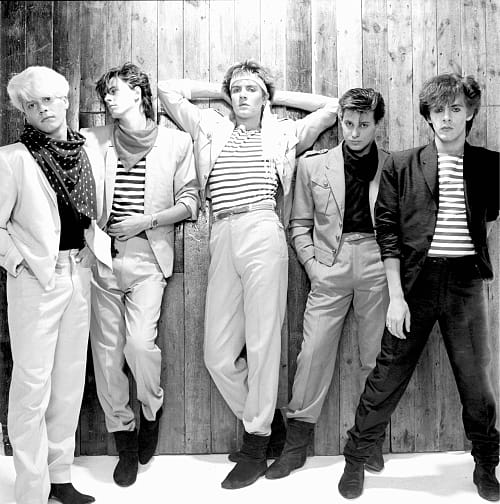
As the ’70s gave way to the ’80s, New Wave became the new thing. Broadly encompassing varying elements of popular music, New Wave featured synthesizers and other electronic sounds and an overall lighter approach than the punk rock that preceded it. The ’70s had also been the era of glam rock, with musical acts like Roxy Music and David Bowie incorporating bold costuming in their hair, makeup, shoes, and clothing, such that the artists had strong visual signatures in addition to musical ones. What was simmering in the ’70s came to a frothy boil in the ’80s. In the first two years of the new decade, the New Romantics, a fashion movement originating in London nightclubs, came to the fore. The quirky, bold fashion of the New Romantics was a natural progression of the previous decade’s glam rockers. Bowie and Roxy Music inspired Japan, and Japan and Roxy Music inspired a young Duran Duran, and by the spring of 1982, Duran Duran had released ‘Rio’.
Why was ‘Rio’ so successful? In "Why Rio Matters" from Annie Zaleski’s Duran Duran’s Rio, the author explains that cinematic music videos (and the rise of MTV), a successful headliner tour, and an intangible coolness were all factors. Why was ‘Rio’ important? It ushered in the fresh, experimental sound of New Wave to an audience receptive to the fun, upbeat tracks. Duran Duran were certainly a product of their time. Other acts had laid the groundwork and Duran Duran carried the torch into the next era of rock music. ‘Rio’ went on to spend 129 weeks on the US Billboard album charts.

The 1980s saw a revolution in the form of electronic music. In her chapter in Modern Records, Maverick Methods, Samantha Bennett discusses the electronic instruments that featured largely in the music landscape: the LinnDrum Machine, the MIDI (which enabled multiple systems to connect), sequencers, and samplers. The synthesizer in particular may be the most distinctive electronic instrument of the era and one still crucial to music made today.
The synthesizer is an electronic instrument, typically operated through a keyboard, that creates a variety of sounds. Some artists, like Wendy Carlos, became well known for their mastering of the synthesizer. Importantly, samplers could be used in conjunction with synthesizers or sequencers, allowing the sampling for which rap is well known to flourish. Public Enemy’s ‘It Takes a Nation of Millions to Hold Us Back’ (1988) and The Beastie Boys’ Dust Brothers-produced ‘Paul’s Boutique’ (1989) are two examples of records almost entirely constructed from samples.’ Introducing electronic music complicated music for the better, enabling intricate production and editing, as well as new sounds, rhythms, and instrumentations.

From 1979 to 1987, Hip-Hop largely remained authentic to its countercultural roots in challenges manifested in the urban landscape of the late twentieth century.
In 1982, ‘conscious’ rap music came into prominence when Grandmaster Flash and the Furious Five released ‘The Message’ through Sugar Hill Records, co-owned by the innovative producer Sylvia Robinson. J.B. Peterson explains the term ‘conscious,’ as referring to an artist’s lyrical realization of the various social forces at play in the poor and working-class environments from which many rappers hail and from where the music and culture of Hip Hop originated. ‘The Message’ was a powerful response to, and commentary on, inner-city conditions in America. Since then, the subgenre of conscious rap music has continued to produce some of the most inspired songs for the enlightenment and uplift of Black and brown people including Run–D.M.C.’s ‘Proud to Be Black’; KRS-One’s ‘Self-Destruction,’ ‘Why Is That?’, and ‘Black Cop’; and Public Enemy’s ‘Can’t Truss It,’ ‘Shut ‘Em Down’, and ‘911 Is a Joke’.
From the late 1980s, rap and rappers began to take center stage as Hip-Hop exploded onto the mainstream platform of American popular culture. The extraordinary musical production and lyrical content of rap songs artistically eclipsed most of the other primary elements of the culture.
In their chapter from Popular Music in the Post Digital Age, authors Patryk Galuszka and Katarzyna M. Wyrzykowska define the broadly applied term ‘independent’ as it pertains to record labels and artists as those who distribute their records through distributors not affiliated with major record companies. Any artist who distributes through a major record label owes a portion of their profits to the label, but the power and connections of the label almost always ensure greater and more predictable sales.
The independent label first came about in the 1980s. To distribute music without ties to a major record label gave the impression of a group more in-tune with what audiences wanted, a group with better ethics and aesthetics, musician- and worker-centered, that eschewed the bureaucracy and corporatism of a major label. The challenge, of course, is to succeed in a capitalist environment as a small, ethically minded or ideologically pure, label. The 1980s saw the pinnacle of independent labels’ success, although many would-be indies were plagued by poor business management and a challenging landscape. By the 1990s, in order to succeed, the smaller, independent labels often found themselves absorbed by or in partnership with the major record labels. Today, record labels continue to experiment with different ways of distributing music, balancing costs, and maintaining the line between their ideals and the means to succeed.

It is arguably the most famous music video of all time. One that broke the mould of its format. It has been recreated, its choreography rehashed and repeated, countless times. Uploaded to YouTube in 2009, decades after its 1983 premiere, the official version has over 800 million views. It is, of course, Michael Jackson’s ‘Thriller.’ At 14 minutes long, it is a short film and unlike any other music video of the time. There is a story within a story, complete with narrative arc, a cast of characters, and complex costuming. To this day, donning a red leather jacket and single white glove effectively recalls the image of Michael Jackson. Though he didn’t wear the single glove in this video, Jackson’s silhouette is distinctive and recognizable in slim pants that hit above the ankle, white socks, and understated black loafers. The costume is both fashion and function, allowing Jackson to dance with precision and to display his moves to their advantage. In other videos, Jackson made a white fedora and two-tone patent leather shoes iconic. But the ‘Thriller’ video is not iconic for its memorable outfits or choreography alone. In form and style, it was both innovative and risky, but Jackson pulled it off, where few would have tried and even fewer been successful.
In his chapter "Television Vaudeville" in Money for Nothing, Saul Austerlitz describes how ‘Thriller,’ emerging at the end of 1983, took the ambiguity at the heart of portrayals of Jackson and made them the centerpiece of what was then the largest, most expensive music video ever made. The fourteen-minute video starred Jackson in his own horror film, one that played up the confusion inherent in his persona. Was he a bland nice guy—boyfriend material? Or was there a threatening wacko lurking within? In raising these doubts, Jackson was toying with a nation of white record buyers and MTV watchers, simultaneously telling them not to fear him as a black man and raising doubts about his own trustworthiness.
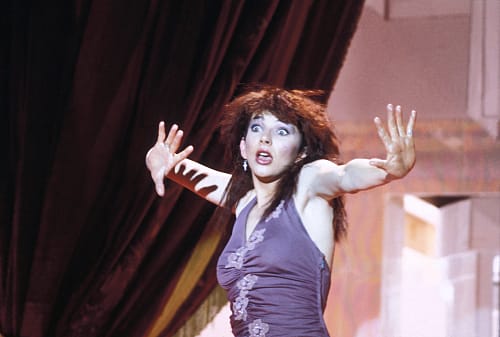
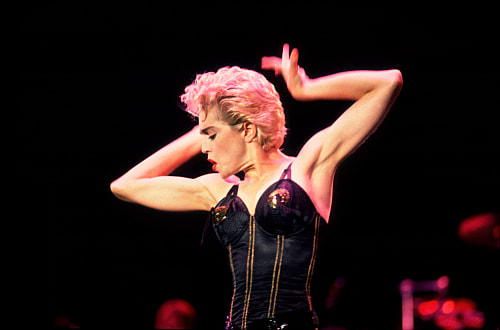
Both Kate Bush and Madonna have a status that has been fairly rare for women in the popular music world. In the 1980s, Kate Bush opened the way for female performers who would not be limited by the gender constraints of rock or pop. In that same decade, Madonna redefined what it meant to be a pop star and, in the process, changed the appearance, sound, and intentionality of modern popular music.
In her chapter "Feminism, Gender and Popular Music" in The Bloomsbury Handbook of Feminism and Religion, Alison Stone discusses the game-changing success of Madonna and Bush as that of auteurs: artists who, while collaborating on their music with many other people, have exercised as much overall control over the process and its products as possible. The two artists have done this in different ways: Bush has retained control over songwriting, recording and production, while Madonna’s authorship has been more focussed in areas such as performance, image changes and promotion and constructing star personae, as well as her significant musical input.
Read Alison Stone's chapter, "Feminism, Gender and Popular Music", here.
In "The Female Voice" (Beyond and Before: Progressive Rock Across Time and Genre), Hegarty and Halliwell draw attention to Bush's video and dance realizations in the 1980s. She contributed centrally to the videos, creating detailed storyboards for singles such as ‘Army Dreamers’ (1980) and directing videos for singles taken from her later albums. ‘Wuthering Heights’ compresses Emily Brontë’s 1847 gothic novel into a five-minute dramatic ‘songscape’ in which Bush plays Catherine Earnshaw. When questioned on a BBC Nationwide special, Kate Bush on Tour (1980), about what she might do next after two albums and a successful tour, the twenty-one-year-old Bush responded, ‘I haven’t really begun yet. I’ve begun on one level, but that’s all gone now so you begin again.’
Over recent years, much attention has been paid to the topic of gender equality in the music industry and in the wider sphere of music and sound. To mark Women’s History Month, we explore how a selection of female artists and scholars have responded to some of the key challenges faced by women. These include re-examining music histories that focus on men, asserting musical identity and liberation, overcoming lack of access to male-dominated music spaces, and challenging the sexualization of a performance.
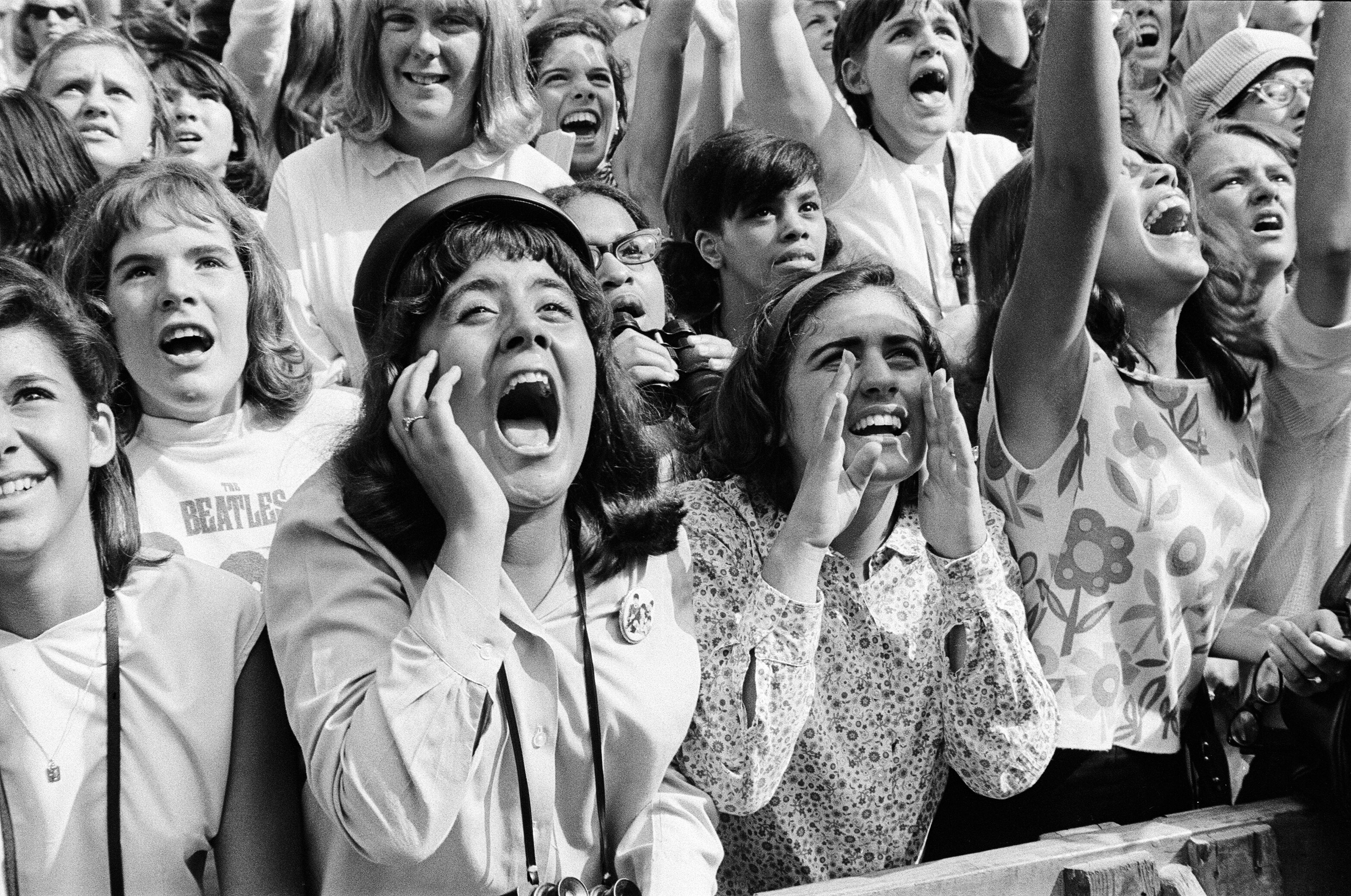
Much has been written about the Beatles and their predominantly young, female fan base. Author Christine Feldman-Barrett recognizes that a challenge in identifying as both a Beatles fan and a scholar is that her work can be dismissed as merely that of a fan, therefore diminishing her authority. The disregard of women’s contributions to the immense body of Beatles scholarship is consistent with a pattern of mocking or de-emphasizing the role of women in the general history of the Beatles.
However, from Astrid Kirchherr’s early photos of the band and Linda Eastman (later McCartney’s) documentation of their work, to the fans of all ages and eras whose passion for the Beatles helped sustain first their success and then their legacy, it’s clear that without the support of and legitimization from women and girls, the Beatles would not exist in the way with which we are familiar.
Learn more in the introduction to Christine Feldman-Barrett’s A Women’s History of the Beatles.

In the preface to Janet Jackson’s The Velvet Rope, author Ayanna Dozier notes that she refers to the artist as Janet throughout the book, so as to recognize her autonomy as a solo artist, distinct from her very famous family. On The Velvet Rope album, Janet celebrates her entire being and all of its possibilities. She celebrates her Blackness, her dignity, her feminism, her sexuality and desire, and her liberation.
Dozier asserts that in claiming what is hers, Janet sets an example to be followed; Janet deserves the self-actualization she channels through the album. Why wouldn’t she? Do we not all exist in multiplicities that should be recognized as distinct elements but, together, inextricable aspects of a single person? Shouldn’t we be allowed to exist wholly without fear of retribution? As a Black woman, Janet is made to navigate respectability politics and societal expectations of what she should or shouldn’t do, with implications for her character and career if she were not to comply. The listener of The Velvet Rope is witness to Janet’s liberation, and she should know that she deserves liberation, too.
For more on Janet Jacksons’ liberation, read this chapter from Ayanna Dozier’s Janet Jackson’s The Velvet Rope.
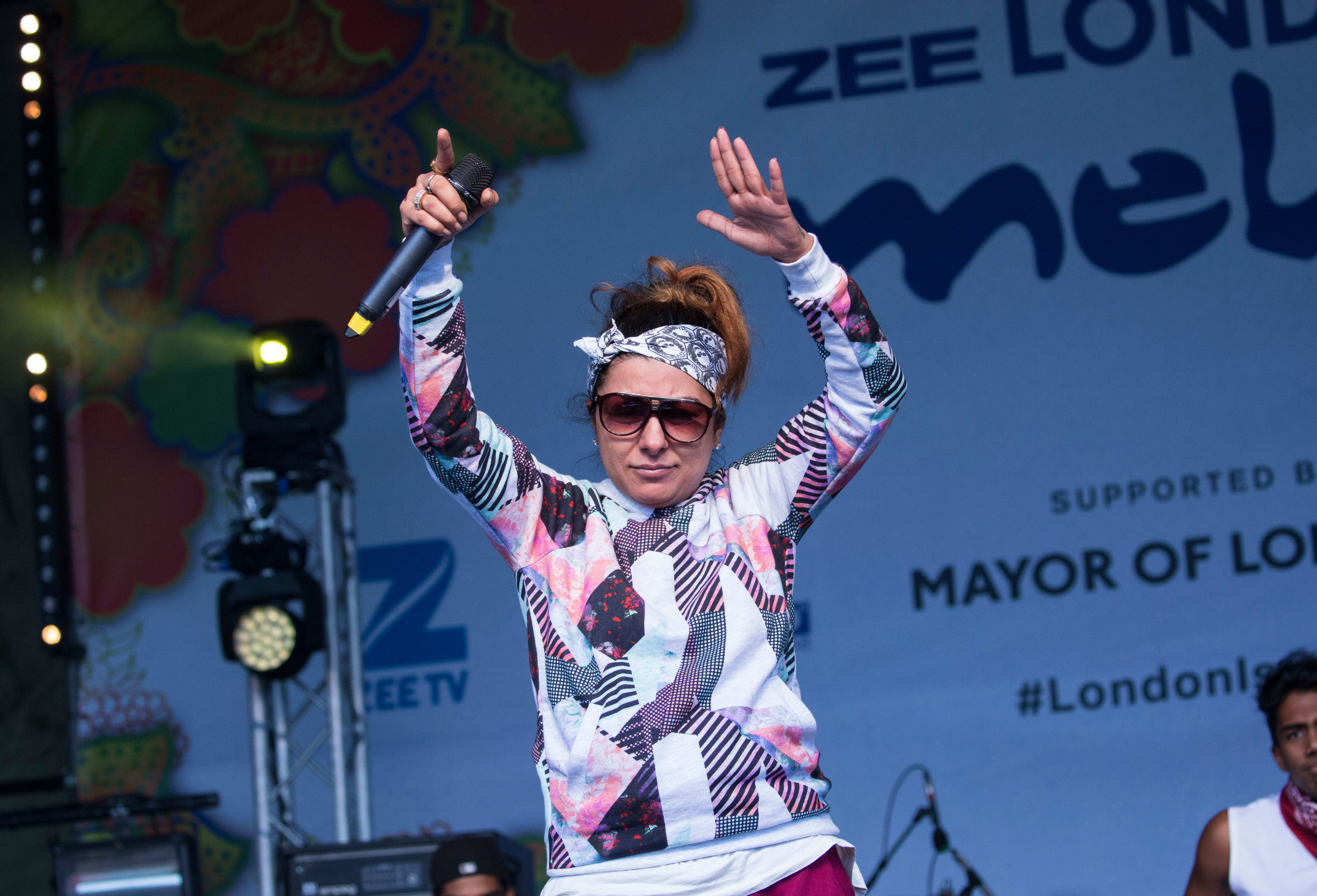
In Birmingham, UK, British-Asian rapper Hard Kaur found that success was not easy to come by in the male-dominated spaces of bhangra-influenced British Asian music or mainstream hip-hop. She forged her own path, recording a song for which she rapped in Hindi in a collaboration with British-Asian hip-hop group the Sona Family. This collaboration attracted attention from Bollywood music directors interested in a fresh voice, meaning Kaur was able to succeed by using multicultural, multilingual, and transnational strategies.
In her chapter from the book Towards Gender Equality in the Music Industry, Julia Szivak highlights that part of Kaur’s strategy for success is to project a tough demeanor and confrontational attitude, qualities more typically associated with masculinity. Does this mean that in order to succeed in a male-dominated industry, one must adopt the posture of the dominant culture? Would it have made a difference if she hadn’t? Do we make a distinction between women who are being tough to seem masculine and women who are tough and not trying to be masculine?
Explore further by reading Julia Szivak’s chapter from Towards Gender Equality in the Music Industry.

ASMR (Autonomous Sensory Meridian Response) has enjoyed a bloom of popularity in mainstream social media in recent years, giving platforms to the mostly female ASMRtists who create sensory-driven audio-visual content. Such content is often described as inducing “tingles” and similar feel-good sensations. From a sonic perspective, ASMR generates interesting analyses of tools and materials that amplify its efficacy, like high-quality headphones or, counter to expectations, cheap fabric, as well as the intimacy and pleasure it creates for the listener.
In their chapter from The Bloomsbury Handbook of the Anthropology of Sound, Smith and Snider consider the impact of the sexualization of ASMR and the accusations that it is inherently fetishistic. Responses to ASMR content can be gendered in nature and sexuality projected onto the performer based on the listener’s interpretation of the content’s sound and set up. For example, whispering and prolonged eye contact with camera have been read as sexual, despite the performer’s non-sexual actions. The authors note that ASMR explicitly seeks to create intimate, caring, comforting, and nurturing experiences for their viewers - qualities typically associated with femininity and womanhood. This further exacerbates the gendered analyses of ASMR based on an individual’s physiological response. The sexualization of ASMR forces a closer examination of the boundaries between pleasure, intimacy and sex, and what they mean in a digital space.
For more on ASMR, read Naomi Smith and Anne-Marie Snider’s chapter from The Bloomsbury Handbook of the Anthropology of Sound.
Sound art is art. It is an art form that encapsulates all types of sonic expression—from acoustic, to digital, to sounds recorded in the natural world. Sound art is not an isolated art form; by its nature, it intersects with other artistic disciplines: visual art, dance, theatre, film, concept and installation art, and more.

The relationship of sound and music to the art world cannot be disregarded in the rise of sound art. The Futurist and Dada movements produced several theories about using noise in music, mechanized instrumentation, and spatialized sound; sound sculpture could be considered to a certain extent to be an offshoot of Kinetic art; and sound installation has an aesthetic kinship to Land art. In the twentieth century, there have been numerous examples of sound or music pieces made by visual artists. Following the departure from traditional painting and sculpture toward other forms of visual art and performance that began with Dadaism and Futurism, artists affiliated with Fluxus and early video and performance art in the 1960s also engaged with sound as another alternative medium. Most sound by visual artists is formulated and/or performed as music, although in Conceptual art sound becomes an element in installation works that seek to dismantle the accepted definitions of an art object.
For more on theories of sound art, read Alan Licht on “Sound and the Art World” in Sound Art Revisited.

Jung In Jung creates sound compositions by introducing interactive technology into dance choreography. In choreographing a contemporary dance piece, Jung simultaneously composes a sonic experience. Dancers are tethered to the cable of Gametrak controllers, which create sound when moved. The motion-tracking technology is used to investigate the aesthetic impact on spectators. Working in conversation with theories on movement put forth by luminaries in contemporary dance, including Merce Cunningham and William Forsythe, Jung incorporates sound technology, making for a collaborative audio-visual project that combines sound and choreography in the making of a composition.
For more on sound art in choreographic practices and contemporary dance, read Jung In Jung on “Sound – [object] – dance: A holistic approach to interdisciplinary composition” in Sound and Image: Aesthetics and Practices.

“Cinema is a multisensory form, through which sound is present again and again. Even in the persistently visual aspects, ‘sound often is [so] integral to the imagery’. Beyond its role in individual pieces, the sound is reflective of culture at large. Since cinema, as all other art, is an artifact of its time, the type of sounds / the nature of the audio in cinema is reflective of cultural norms, preferences, and trends.”
Cinema is not dependent on a single medium but is instead an art that exists as “intermedia,” a form that defies categorization. This is due, at least in part, to the overlap between media such as television, film, and radio, as well as books, magazines, and newspapers. In Paul Hegarty’s words, “the machine is not the medium.” In years to come, the technology used to create cinema (and the perspective of the creator) will change, trends will come and go, but cinema itself will exist. From ciné-romans to photo novels, soundtracks to scores, cinema will ever expand into new formats as filmmakers, artists, and storytellers push the art form in new directions and likely in the form of video art installation, the post-medium.
For more on cinema and sound, read Paul Hegarty on “Expanding Cinema” in Rumour and Radiation: Sound in Video Art.

“The sound art scene is not limited to the Northern hemisphere. Rather, it is globally distributed and has for decades also appeared in various manifestations and constellations in the Global South.”
Sound studies as a field emerges from analysis of several related and experimental art forms, and sound art itself, from Indonesian scholar Sanne Krogh Groth’s perspective, is “noisy, political, subversive, and situated,” but, perhaps, only from the viewpoint of Western aesthetics which define what is and isn’t experimental, what is and isn’t noisy. Efforts at decolonizing art institutions have led to new aesthetic possibilities, such as collaborations between Indonesian noise artists and both Indonesian and German art presenter institutions.
For more on how sound art is not an isolated, but a global, entity, read Sanne Krogh Groth on “‘Diam!’ (Be Quiet!) Noisy Sound Art from the Global South” in The Bloomsbury Handbook of Sound Art.

Was Shakespeare a sound artist? So asks Bruce R. Smith in his chapter “Shakespeare as Sound Artist,” in The Routledge Companion to Sounding Art. Sound studies encapsulates not only production of sound by acoustic or digital means, but also looks to analysis of texts – in this case, the sound design and direction in the plays of William Shakespeare – as means to understand what sound art was like – what were its mediums, who were its practitioners – in the period before recorded sound. Analysis of voice in literature allows us to think through “hearing” and “listening” in a text. Literature itself can give us a look at these practices and even “provide a critique of the practices of contemporary sound art.”
For more on this topic, read Bruce R. Smith on “Shakespeare as Sound Artist” in The Routledge Companion to Sounding Art.
As an artistic form with a rich history of performance and recording practices, popular music displays a vast range of gendered and sexualized subjectivities, communicating powerful stories about the ever-shifting dynamics of human agency in society. Never standing as fixed positions, identity categories of gender and sexuality take shape within the contexts of social, cultural, historical, political, economic, and technological forces, as these contexts continue to change and intersect in new ways.
During the 1980s and 90s, popular music scholars began to examine the nuances of gendered expression in popular music, especially in response to the rise of the music video through televised platforms (MTV, MuchMusic, Kerrang!, Channel V, etc.). Media scholars such as E. Ann Kaplan, Lisa Lewis, and Andrew Goodwin opened a dialogue about gender address in music video, while popular musicologists such as Sheila Whiteley, Barbara Bradby, Marion Leonard, and Stan Hawkins developed new approaches to the analysis of gender performativity in popular music. Since the new millennium, we have witnessed the burgeoning of critical inquiries about gender and sexuality in popular music, with many significant avenues emerging from this literature.
Below we delve into content on Bloomsbury Popular Music to explore gender ideologies and norms, as well as topics as varied as the sexualisation of women’s bodies in Hip Hop, fair access and equality in the music industry, and gender subversion in the music of Joni Mitchell. You can also view our dedicated subject guide on Gender and Sexuality by visiting the Research and Learning Tools page.

Sarah Cohen and Marion Leonard’s article on “Gender and Sexuality” in the Bloomsbury Encyclopedia of Popular Music of the World is a productive place to explore clear definitions of these two powerful terms, as well as a framework for their consideration in popular music contexts. That framework includes the gendered and sexualized connotations for specific genres and historical moments in popular music; the links between performance practice and gender norms; the association of gender with specific musical instruments and technologies; the promotion of gendered ideologies through media cultures; the constructions of gender and sexuality that emerge through genre expression; and the messages and themes that take shape in the lyrics of popular music. In addition to laying out this framework, Cohen and Leonard also open up significant critical space for the concept of resistant expression, allowing for challenges to norms and conventions.

The norms and conventions of popular music, as they are associated with gender roles and constraints are taken as a point of concern by Alison Stone in her chapter on 'Feminism, Gender and Popular Music' in The Bloomsbury Handbook of Religion and Popular Music. Are female artists taken as seriously as male artists? Stone examines the critical remarks about artists like Katy Perry and Taylor Swift, revealing the biases that emerges when women are described in terms that trivialize their work and assess it as superficial and artificial. These tendencies rise to the surface when a female artist is directly compared to a male artist, as in the case of Ryan Adams’ version of Taylor Swift’s album 1989. The value proposition of re-recording a female artist’s work raises numerous issues around the assumptions of genre superiority and expressivity. Stone sets out some important binary oppositions that circulate in the reception of female artists—authenticity/superficiality; agency/objectification; technology/nature—and cautions feminist musicologists from falling into these interpretive traps.

In Remix Multilingualism: Hip Hop, Ethnography and Performing Marginalized Voice, Quentin Williams examines extreme representations of femininity and masculinity in Hip Hop performance. The chapters, “Staging Masculinity” and “Precarious Femininity”, expose relevant examples of what gender theorist R. Connell would refer to as hegemonic masculinity and emphasized femininity. Taking up scholar Tommaso Milani’s suggestion that we ought to scrutinize “the conditions that enable the production of heterosexual masculinities,” Williams discloses the ideologies of tough masculinity that underpin the lyrics of male emcees. Here we see the value of discourse analysis to discover the motivations and ideologies that drive linguistic expression. Taking up these concerns for female representation (as “bitch” and “ho”) in the discourse of Hip Hop, Williams dedicates a chapter to the ways in which the misogynist linguistic elements are connected to the sexualization of female bodies in the genre of Hip Hop. Nowhere is this more evident than in the genre of Body Rap that Williams brings forward.

In her chapter on gender and music production in Critical Approaches to the Production of Music and Sound, Paula Wolfe shines the spotlight on female artist-creators, studying their creative production processes with the aim of revealing the significance of gender within industry practices. From this lens, Wolfe is able to illuminate aspects of authorial control, intentions, and expressive power in the recording studio. Taking two case studies—1) Molina, female artist and self-producer; and 2) Hostile, male producer of the all-female band Savages—Wolfe’s ethnographic approach teases out a myriad of critical concerns for the production of music as a gendered practice. Ultimately, Wolfe raises points that will lead to interesting future debates about musical conventions and the gendered implications of negotiating such constraints: “When positioning the work of both Hostile and Molina in the framework of a gendered contemporary music industry culture, Hostile’s sonic control as ‘producer’ adheres to ‘patriarchal assumptions’ (Mayhew 2004) inasmuch as Molina’s control over her own sound challenges them.”

With their author-collaborators, editors Sarah Raine and Catherine Strong assemble some hard facts about women’s participation in the music industry in Towards Gender Equality in the Music Industry: Education, Practice and Strategies for Change (click here to read the introduction to this volume), raising many questions about industry and education structures that do or do not lead to fair access and equality. Shining the light on these concerns allows this gathering of authors to reveal gender biases in industry practices and to pave the way forward for more inclusive and diverse approaches. While the scholars do not shy away from calling out some serious examples of misogyny and exclusion, they also offer positive reflections on female and queer voices in music creation, performance, and production. One of the great strengths of this collection is its dedication to robust methodologies and theories that will provide the next generation of scholars with the requisite tools to continue a constructive dialogue about exclusive practices and structural inequalities.

Through her contribution to Joni Mitchell: New Critical Readings, Emily Baker mobilizes an intersectional approach to the analysis of embodied musical expression and subjectivity. Focusing on Joni Mitchell’s covers of her own previous recordings (on the 2002 album, Travelogue), Baker exposes the singing voice as the expressive site of converging axes of identity—for instance, gender, sexuality, age, and ability. In the case of an artist such as Joni Mitchell, we have access to the full range of vocal expression over a lengthy recording career as well as a great deal of writing about her life experiences. A female vocalist who has been the object of much critical analysis, debate, and speculation, Baker reveals Mitchell’s original songs to subvert traditions, with her later self-covers developing an intentional commentary on genre and stylistic boundaries. In particular, the song “Borderline” is reframed to present an aging and sensual body that “undoes” the conventions of popular music.
Explore the various ways in which the music industry has adapted in response to the digital revolution in recent years through the featured content links below.

“In terms of the death of the record industry, it is a story, a media story. That’s all . . . a story that is being fed through the media.” -- Jim Carroll, journalist and ex-MD of the Lakota Record label
The digital revolution has driven radical change in the music industry. Back in 2013, Jim Rogers asked 30 industry professionals how the industry had responded to its changing technological environment. Whilst all of them signalled the arrival of the internet as a medium for the circulation of music as the most significant development, they also pointed to other factors in record industry decline, including employment trends, the decline of ‘bricks and mortar’ retailing, a failure to grasp opportunities early enough, and the effects of supermarket retailing. However, as Rogers went on to discuss, the crisis in the record industry did not amount to a crisis in the music industry as a whole.
Learn more in 'Evolution, not Revolution…'' in The Death and Life of the Music Industry in the Digital Age.

“Copying … is real enough and we do not have the luxury of describing whether we like it or not. The question—in the words of Buddhist poet John Giorno—is how we handle it” -- Marcus Boon
Kim Dotcom’s arrest in 2012 was just like a movie: helicopters swooped in; hounds were unleashed; and semi-automatic weapons were waved in the air, wielded by the New Zealand police who stormed into the rural mansion where the Megaupload billionaire, his wife, three children, and house guests were sleeping. On the day before his thirty-eighth birthday, Dotcom was charged with numerous offences including copyright infringement, racketeering, money laundering, and piracy.
Subsequently, the influence of the MP3 blog on popular music culture began to fade. The chilling effect of the Dotcom raids and other antipiracy efforts took its toll. Simultaneously, streaming sites like Spotify and Apple Music produced yet another change in listening habits, away from the downloading, collecting, and the virtual hoarding that characterized the first decade of the twenty-first century, towards on-demand streaming and ‘social’ listening. And yet, copying remains functionally essential, one of the central practices of digital culture. Again and again, we see culture transformed and sustained by reproduction and repetition.
Learn more in 'This is not a remix' in This is Not a Remix: Piracy, Authenticity and Popular Music, in which she considers the relationship between media and culture, by focusing on the social and material histories of copies and their circulation.

Crowdfunding has rapidly gained exposure as a new way for musicians, composers, record producers and all manner of music creatives to find new ways of realizing their work. Among the general excitement, there is often considerable media interest in musicians or producers who succeed in crowdfunding a project that has been neglected by the mainstream. When a music creative uses crowdfunding successfully, it throws light on crowdfunding as a credible and effective way for new music to be brought into a form wherein it can find an audience. In this way, there is often as much excitement about crowdfunding and the particular platform used as there is about the project itself.
Learn more in Mark Thorley’s 'Crowdfunding and Alternative Modes of Production' in Critical Approaches to the Production of Music and Sound.

The 2006 Beastie Boys concert film Awesome: I Fuckin’ Shot That, documenting a New York show by the band at Madison Square Gardens, explicitly recognizes the arena audience as participants. The film also discusses the role audiences can play in documenting an arena experience.
Awesome is an attempt to include the experience of the ‘common people’, however banal at times, within an official record of an arena show. This practice of recording a personal experience, banality included, is now part of the fabric of arena shows, for better or worse. The film declares that arena experiences should be as much about the audience as the artist if not more so and that the event should be collaborative. The experience should be made together.
Neil Fox explores the practice of recording arena experiences through portable devices and sharing them online via social media platforms. Learn more in his chapter We Made This Together - How Awesome; I Fuckin’ Shot That! Foresaw Changes in the Live Concert Experience Brought about by Digital Technology and Social Media in The Arena Concert: Music, Media and Mass Entertainment.

In the first few years of the 21st century, a number of social networking platforms such as MySpace began to achieve widespread popularity and these were quickly embraced by some in the independent music sector as platforms for promotion. By 2005, a number of public forums, blogs and websites emerged that discussed the ways in which the independent music sector could approach and make use of these new technologies and adapt to the online environment.
However, the advice and insight was not universally embraced by the industries, and despite the comparative popularity of these blogs, that knowledge was not widely accessed. To a large extent, the independent music practitioners making use of the knowledge available online were something of a self-selecting group: by definition the ones who were already both active internet users and those seeking new, alternative methodologies.
From this context, Un-Convention arose as a grassroots series of independent music knowledge events that bring together music workers and musicians in a hybrid conference and music festival format. While these sorts of conversations were taking place online, Un-Convention provided a geographically specific site for face-to-face conversations and dialogue about strategies for independent music as well as a celebration of that music and culture.
Learn more about this international platform in Andrew Dubber’s 'Everybody talk about pop music: Un-Convention as alternative to festival, from DIY music to social change' in The Pop Festival.
While the first music videos arguably can be traced back to the beginning of the last century, they really came into their own during the 1980s due to the launch of MTV, an American cable and satellite channel with its headquarters in New York City.
Symbolically, it was the clip ‘Video Killed the Radio Star’ by The Buggles (produced by Trevor Horn) that ushered in MTV, followed by ‘You Better Run’ by Pat Benatar. Mark Goodman, one of the first five MTV VJs, uttered the MTV slogan: “Starting right now, you’ll never look at music the same way again … We’ll be doing for TV what FM did for radio.”

Music videos in all their forms remain powerful cultural artifacts that circulate widely across social media platforms to promote music and musicians. The proliferation of social networking sites and handheld technologies has changed the course and format of the video and its modes of screening music.
As music videos animate our social and cultural spaces, they shape significant representations of gendered, sexualized, raced, and classed identities. The musical contexts of genre and style comprise a driving force in the shaping of cultural identities and a complex set of factors cultivate a musical persona.
Learn more in Framing Personae in Music Videos in The Bloomsbury Handbook of Popular Music Video Analysis.
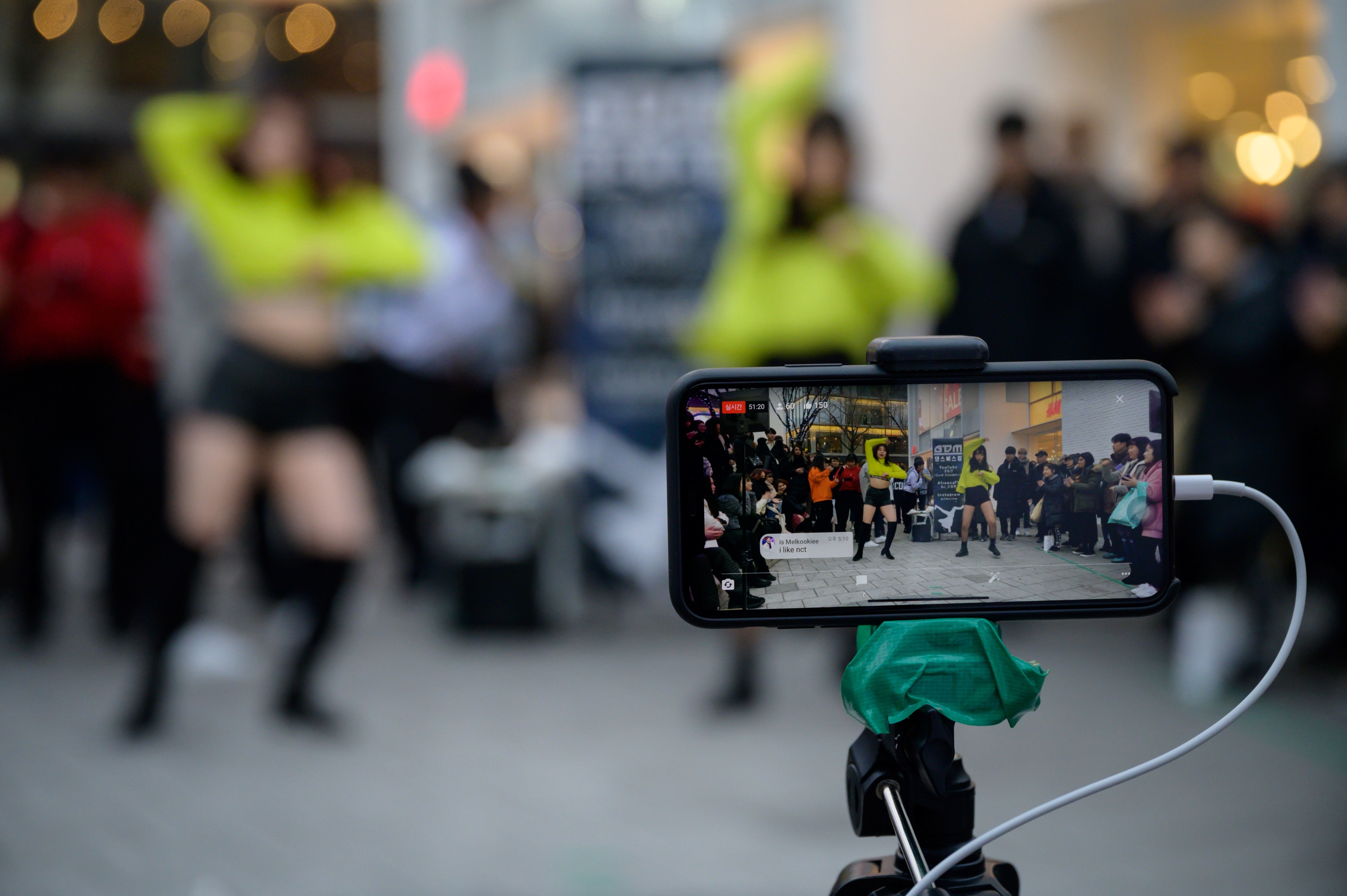
The advent of the music video in the MTV age not only transformed the landscape of pop, but may well have been part of a larger artistic project. Sunil Manghani suggests that videos have become a new site of cultural production. A new video form – which he calls the Internet video – has emerged as a means for a younger generation to communicate and experiment with the forming of identities and social connections.
Learn more in The Pleasures of (Music) Video in Music/Video: Histories, Aesthetics, Media.

‘This Is What You Came For’ is a video collaboration between artists Nava, Harris and Rihanna that has received over two billion hits on YouTube. We encounter at the very on-set a multitude of spaces, including a desert, a clearing in the Cascadian forest, and a massive white cube, closed on all sides except one.
Using an innovative 360-degree camera technology and projection mapping, Nava is able to project realistic environments into the cube which are captured entirely in-camera (no post-production, no CGI). Such virtual spaces, which include dance clubs, desert scenes and even a simulacrum of the aforementioned forest, are so convincing that the viewer sees Rihanna, the video’s constant focal point, to be interacting with them in real time.
Learn more in Risers, drops and a fourteen-foot cube: A transmedia analysis of Emil Nava, Calvin Harris and Rihanna’s ‘This Is What You Came For’ in Transmedia Directors: Artistry, Industry and New Audiovisual Aesthetics.
Musical countercultures have sprung up across the world throughout the 20th and 21st centuries, prevailing as an expression of societal subcultures and anti-establishment movements, and as a sonic rebellion against the dominant musical genres which embody the status quo in their particular moment. Discover countercultures throughout the modern era as explored by a range of international authors on Bloomsbury Popular Music:

In his chapter on the politics of novelty in the 1960s, Peter Dale explores the legacy of the era’s political activism and the true countercultural contribution of its rock music. He examines the impact of reductive secondary interpretations of a singular ‘Sixties’, and the potency of the peace movement and political significance of rock having been amplified.
Psychedelic spirituality and the use of drugs underpinned the sounds and counterculture of the 60s. LSD and marijuana in particular were associated with hippiedom at a time when there was an ‘easy confluence between Indian spirituality and drugs’. Read more about psychedelia and spirituality in the context of the creative process, from the influence of Ravi Shankar and transcendental meditation on The Beatles, to the relationship between drug use for ‘mind expansion’ and the creation of psychedelic soundtracks for counterculture films.

While depictions of the festival on screen helped to mediate collective perception by playing down the commercial side of the event and mythologizing its countercultural impact and 'aura', one artist of the time for whom the Woodstock vision of free love and revolution had its limitations was Joni Mitchell. Discover how the pointed lyrics in her song, Blue sought to puncture "Woodstock’s hazy, under-conceptualized dreams of what the counterculture might achieve".

In South America, the canción de protesta or ‘protest song’, denotes a song with a political and ideological message or with a marked social criticism, usually expressed through its lyrics. The canción de protesta first appeared in Venezuela’s popular music in the mid-1960s, within the context of the global countercultural media explosion, and the centre of its activity was based in the country’s universities where concerts, rallies and marches took place.
It was a music trend similar to that of the nueva canción latinoamericana in other countries such as Chile, where 'Rock andino' was also emerging in the late 60s and early 70s as an expression of youth counterculture in combination with the movement nueva canción chilena which employed marginalized music from the Andes. One of the canción de protesta genre’s most prominent musicians was Alí Primera, who was a national political activist and expressed the idea that he was not only a singer of the political left, but a singer for all poor people.
Read about the fine line between the canción de protesta and propaganda which came to develop in the genre’s ‘second period’ from 1999 onwards, as it came to be adopted by Venezuela’s president Hugo Chávez as the sound of the 'Bolivarian revolution' and manipulated in the hands of the regime as a mass-gathering device for left-wing political propaganda.

Punk as a cultural genre first emerged back in 1976 and 1977, and as author Kevin C. Dunn outlines, over the years it has become a global force that constructs oppositional identities, empowers local communities, and challenges corporate-led processes of globalization.
A key characteristic of punk music was its chaotic, dissonant assault on the established norms of rock’n’roll from the likes of the Sex Pistols, The Ramones, and Siouxsie and the Banshies; shared rejection of fashion norms was also an important aspect of punk counterculture.
In Global Punk, read about how a deeper understanding of punk means recognizing its multifaceted character as a set of social practices, with punks rejecting 'sanitized' popular culture and creating their own cultural products. Adoption of the national idiom and the founding of independent labels was an important part of this DIY ethos, for example in Europe, punk was sung in native languages and organized by local scene.
Despite its overprotective 'gatekeepers' and punk participants’ tendency towards hyperbole, punk’s rejection of passive consumerism and reflection of the working-class, artistic, and nihilistic attitudes felt by young people can be seen to have 'created the opportunity for political empowerment and resistance in people’s everyday lives', beyond the parameters of 'high politics'.

Campaigning political practice within the last three decades has taken on a renewed carnivalesque atmosphere, with contemporary protests reminiscent of the festal demonstrations of 60s counterculture. Creative, diverse performances have been at the forefront of festival-style Climate Camps, Extinction Rebellion roadblocks, or the Occupy movement with its pop-up tents in urban financial centres. These collectives have drawn on rebellious festival or event culture in what author George McKay describes as 'celebratory confirmation of the demand for social alternatives'.
Discover his exploration of ‘Protestivals’ and their role as a creative response to the traditional political rituals of the left, with marches from point A to point B and speeches along the way. He delves into the concept of protestivals as experimental ‘cultural heterotopias’ providing alternative possibilities to the status quo, while exploring their countercultural value from the view of cultural critics – are they truly an ‘instrument of political opposition’ or merely a temporary 'ritual of rebellion'?
From the beginnings of the twentieth century to today there has been a fascination with the idea of music as a marker of shared tradition within a nation, and therefore as a builder of cultural identity. In an increasingly globalised world, the connection between music-making and identity has become a more difficult, yet still important, area of study.

National identities are often simultaneously embraced and contested in the practises of popular music, particularly through its fusion of traditional with contemporary or commercial styles. Discover how the creation of Punta Rock, in the 1970s and 80s helped to promote Garifuna identity through the maintenance of the Garifuna language and song forms; how Zenji Flava demonstrates the locality of the Isles of Zanzibar through song lyrics, musical patterns, and music videos; and how Moroccan fusion bands have elevated regional and sub-group musical traditions such as gnāwa to a marker of national identity.

Held annually since 1956, the Eurovision Song Contest involves over 50 participating countries and regularly reaches hundreds of millions of television viewers. Overtime it has refashioned the national identities of the countries involved, making them appear more attractive through new media, technologies and fashions. Eurovision songs, while derided by some as over the top cultural kitsch, present elements of national and European identity through the selection of music style and performative symbols. Explore Dean Vuletic’s Postwar Europe and the Eurovision Song Contest on how the contest has historically reflected political and cultural shifts across Europe, acting as a vehicle to address topics such as patriotism, European integration, and war. Read more about Abba, one of the most iconic Eurovision acts, in Elisabeth Vincentelli’s contribution to the 33 1/3 series.

Perhaps owing to its ability to conserve cultural memory, and therefore a collective identity, music is particularly important in cultivating ties to the home country of migrant or diasporic communities. Read about how migrants from Turkey, who settled in Berlin in the 1960s, utilise bağlama and Türkü bars in order to keep their cultural heritage and identities alive; and about how Parisian-based Radio ALFA uses fado to establish a contemporary relationship between the Portuguese communities of France and their homeland.
Popular music has also been used to assert a cultural identity that is in opposition to the dominant culture of a country; this is often communicated via hip-hop. Since its birth in the Bronx in the 1970s as a protest medium, hip-hop has been utilized as a mechanism for expression. Discover how hip-hop features in the musical life of individuals from Mexico to Sub-Saharan Africa, alongside how indigenous musicians in Australia empower themselves through hip-hop whilst rejecting the idea that their expression of identity has to be done in a traditional way.
The relationship between popular music, literature and the written word throughout the 20th and 21st centuries has extended from their critical connections as subjects of study, to structural similarities, and a shared narrative power to represent and shape cultural, social and political history. Explore the ongoing encounters and collisions between these disciplines, and some of the key artists and writers at the heart of their intersections.

Another poet-songwriter and Bob Dylan’s contemporary, Leonard Cohen, transitioned from writing formalistic poetry and prose, to poetry in song. Learn about how jazz and poetry readings by Jack Kerouac had a notable early influence on his work.

American writer and figurehead for the ‘Beat Generation’, Jack Kerouac, lived a life infused by the sound of songs at home, out on the road, and within live performances. Read more about the rich association between literature and music in his work and how his peripatetic style sought to mirror bebop jazz rhythms.
Also discover Kerouac’s influence on modern artists from Van Morrison to Pearl Jam and that of his fellow Beat Poet Allen Ginsberg on The Beatles, as well as how Paul Simon came to reinvent their American road narrative.

Intertextuality is a device mainly known within a literary context, but author Quentin Williams explores the frequency of intertextual references within rap, along with its multiple levels of meaning and linguistic subtlety. Discover more about the way MCs sample from everyday texts circulating in and outside of hip-hop spaces and how their performances may be indicative of intertextual sampling.

Reporting or writing about music is a key component of the industry’s ecosystem. Read more about music journalism’s common critical criteria, its role in capturing the essence of music, and how its connection to the more literary style of New Journalism led to the development of the cult of the rock journalist.

In When Genres Collide, Matt Brennan rethinks popular music history by exploring how writers in the music magazines Down Beat and Rolling Stone constructed an artificial ideological divide between jazz and rock ‘n’ roll that would be replicated in American musical discourse for decades to follow. This provocative new history received an honorable mention in the Association of American Publishers’ PROSE Award for Music & Performing Arts in 2018.
Brennan challenges the widespread view that the mid-1950s was a revolutionary starting point for popular music, the moment when African-American-originated ‘rhythm ‘n’ blues’ was brought to a new mass market of white teenagers through re-branding it as ‘rock ‘n’ roll’. In the chapter 'Jazz Culture as the Precursor to Rock 'n' Roll', he argues that this was in fact pre-empted by the 1930s swing craze. When Benny Goodman hired the African-American bandleader Fletcher Henderson (pictured) to create arrangements of hot jazz for his 1935 radio show, Goodman leaped to stardom: hot jazz, now labeled ‘swing’, immediately tapped into a young white audience across the USA, in a similar way to Elvis Presley’s appearance on the Ed Sullivan show in 1956.
Read more about the swing phenomenon in the Encyclopedia of Popular Music of the World entry on ‘Swing Music and Big-Band Jazz’.

From classic arcades of the 1970s to modern blockbuster video games, music is key to the experience and popularity of gaming. One of the most iconic and innovative gaming soundtracks to date is Koji Kondo’s score for Nintendo’s 1985 game, Super Mario Bros. Andrew Schartmann's 33 1/3 title outlines how Kondo and his team transformed the creative landscape of video game music.
During the 21st century, musical production, performance, and gameplay have become increasingly interconnected. Discover more about the evolution of hip-hop, electronic dance music, and interactive media in Mike D’Errico’s chapter of Critical Approaches to the Production of Music and Sound.
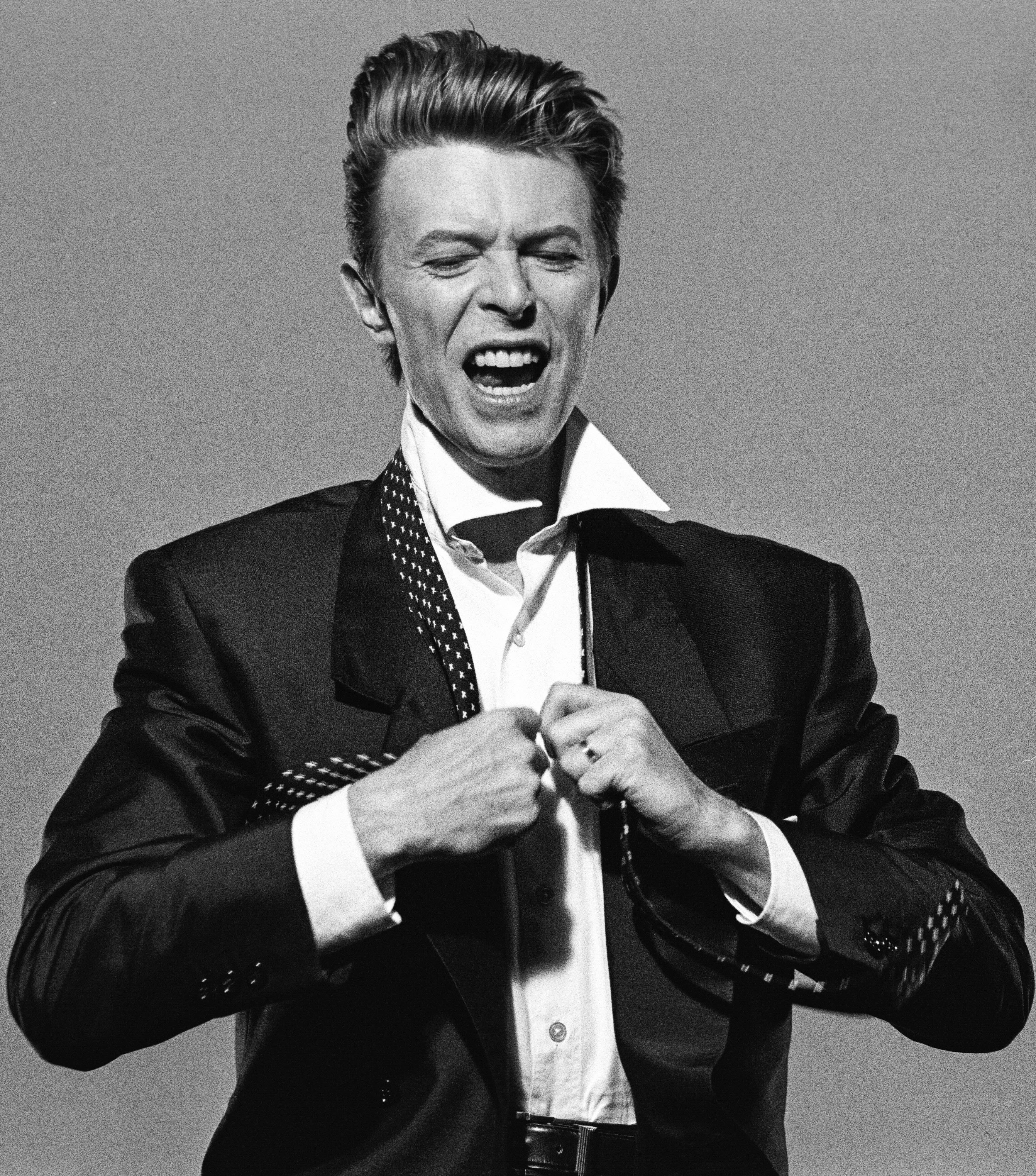
“Exactly when did poetry become subsumed by rock ‘n’ roll? When was experimental film swallowed and digested by music videos? My generation of artists held a starry-eyed belief in the notion of crossing over; of leaving the elitism of the white cube for other media and venues: video, performance, audio, music.” Tony Oursler
Tony Oursler was not only David Bowie’s friend and muse but a collaborator who was interstitially involved with the music videos Bowie created with Floria Sigismondi. A significant transmedia artist in his own right, Tony Oursler understood the artistic magnetism that drew Bowie and Sigismondi into a creative partnership. Oursler’s ‘starry-eyed belief in the notion of crossing over’ and resistance to elitism sum up an approach that has been neglected by much of the literature on transmedia.
Learn more in The alchemical union of David Bowie and Floria Sigismondi: ‘Transmedia surrealism’ and ‘loose continuity’ in Transmedia Directors: Artistry, Industry and New Audiovisual Aesthetics.
Discover David Bowie’s work as a music video pioneer in The Boy Kept Swinging: David Bowie, Music Video, and the Star Image in Music/Video: Histories, Aesthetics, Media.

The Cuban-American singer Celia Cruz rose, during the mid-twentieth century, to become one of the most important and dynamic performers of Latin American music, across genres such as Salsa, Bolero, and Guaracha. Born in Havana in 1925, she produced her first recordings in Venezuela in 1948, before touring Latin America over the subsequent decades with groups and artists such as Sonora Matancera, Tito Puente, and Johnny Pacheco.

Miles Davis enjoyed a prolific five-decade career as one of the most acclaimed and innovative musicians in the history of jazz. Born in Illinois, his family eventually moved to St Louis, Missouri where he began to play his trumpet in bands, before later moving to New York City and becoming a jazz session regular in Harlem – performing jazz in the bebop style, and alongside his hero Charlie Parker. He went on to develop the idiom of cool jazz with his various groups, eventually coming to write his seminal work Kind of Blue in 1959, which became the best-selling jazz album of all time.
Find out more about one of his greatest albums, Bitches Brew, in the 33 1/3 edition by George Grella Jr.

Over the course of a career that spanned more than five decades, Aretha Franklin became the internationally recognised voice of Soul. Her music sound tracked the burgeoning feminist movement of the late 60’s while powerfully evoking the emotions of the civil rights movement. Her recent death prompted an outpouring of tributes, including from President Obama who stated that her music ‘helped define the American experience’.
Find out about Franklin’s early years and gospel roots in the acclaimed 33 1/3 title, Amazing Grace.

Discover the works of one of the pre-eminent figures of Arabic music, Egyptian singer-songwriter Umm Kulthūm.
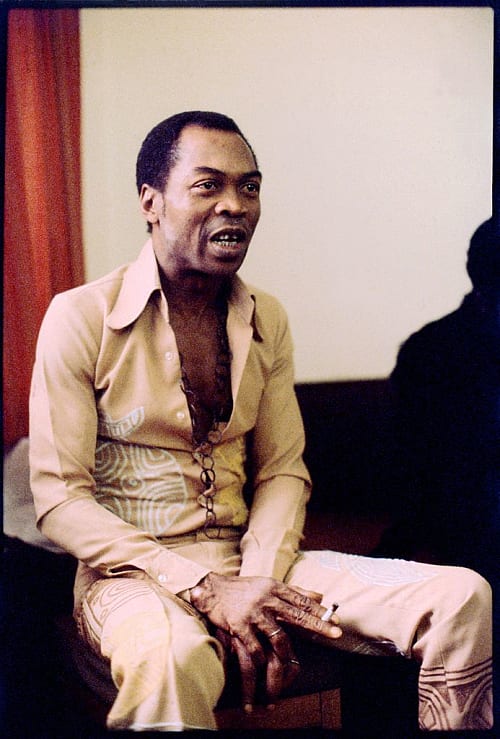
The Nigerian multi-instrumentalist bandleader and activist Fela Kuti brought the sound of radical African jazz to a global audience. Born into a politically active family, he understood the fundamental connection of music and politics.
In the early 1960s he began playing in a style inspired by the American soul/proto-funk of James Brown that he termed 'Afro-beat'. Later, he travelled to the United States to tour and record and there he was introduced to the Afrocentric activism of the Black Panthers and the writings of Malcolm X, Eldridge Cleaver, and others and began to compose unabashedly political music.
In Nigeria, Kuti founded a recording studio, the Kalakuta Republic and toured West Africa. In 1977, he released Zombie, an extended attack on the state of Nigeria’s military. This led to a government-sanctioned attack on the Kalakuta Republic resulting in great personal and professional loss.
You might also be interested in the chapter 'Art at the Cutting Edge: Class, Cultures, and Globalization in African World Music in The Bloomsbury Handbook of Popular Music and Social Class.

Brazilian singer, composer and musician Tim Maia enjoying a long career in which he created music spanning an eclectic range of genres from soul to samba-rock. His memorable musical style and impassioned approach to life were encapsulated by his infamous Tim Maia Racional recordings in particular. Allen Thayer’s 33 1/3 volume on Racional Vols. 1 & 2 Introduction explores Maia’s larger-than-life public persona and pioneering contribution to international soul and the music of his homeland.
At the time of the US civil movement, Maia was the first black Brazilian entertainer to thoroughly break from the traditional roles, namely samba, as he introduced American soul music with its outspoken cultural stances to Brazilians of all colours. His music’s blend of modern soul and Brazilian music with elements of samba and baião, led to the development of the so-called Black Rio music scene in the 1970s, which helped to define a modern black Brazilian identity beyond mass culture’s circumscribed role for Afro-Brazilians.

Prince’s eclectic, genre defying music, and uniquely flamboyant style made him one of the most popular yet controversial artists of the late 20th Century. Key themes dominating his life, work, and legacy are explored in Joseph Vogel’s illuminating new biography, This Thing Called Life, including chapters on gender, race, religion and death.
Find out more about Prince at his creative peak in the 33 1/3 edition, Sign ‘O’ the Times, by Michaelangelo Matos, which delves into one of the landmark double albums of the 1980s. Also discover the para-religious devotion of Prince’s fan community in Chapter 7 of Religion and Popular Music, and the significance of his connection with Minneapolis in the Encyclopedia of Popular Music.
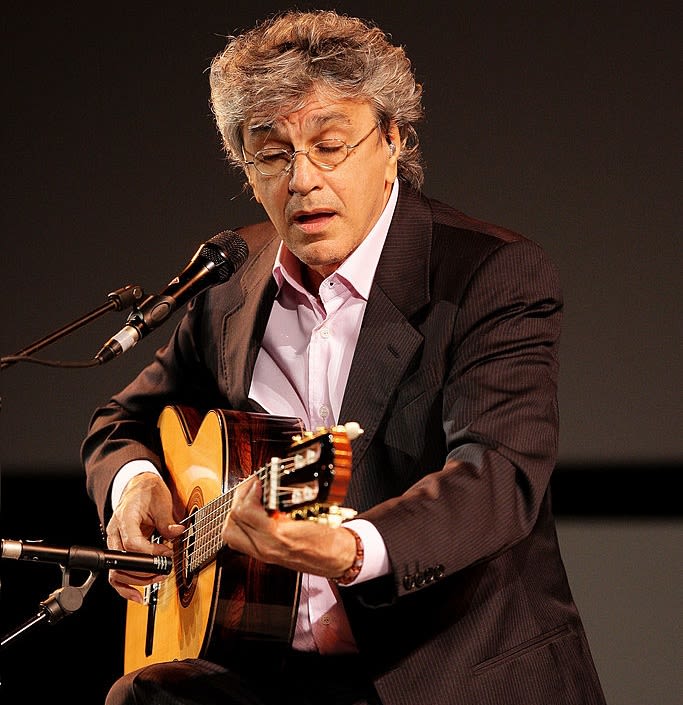
As part of the brand new 33 1/3 Global series covering key recordings from around the world, discover the life and work of the legendary Brazilian artist, Caetano Veloso. Exiled by the Brazilian dictatorship in the 1960s, Veloso helped pioneer the Tropicália movement that took the South-American country by storm, having a lasting impact on Brazilian popular music and remaining a point of reference for innovative musicians into the twenty-first century. Find out more about Veloso’s life as Barbara Browning explores his third studio album A Foreign Sound.

The Velvet Underground are seen by many as one of the most influential rock groups of all time, despite a lack of commercial success during their years as a band in the mid-late 1960s. Their avant-garde style of rock 'rejected the creative status quo of the time', and sought to 'mould the perverse, the brutal and the beautiful into art'. Lou Reed and John Cale combined complex musical techniques from other genres such as jazz and classical with controversial lyrics about subjects such as drugs, sexual deviance, and prostitution.
Their music was built on drones and distortions, and was pioneering in its unashamedly experimental tone, blurring the boundary between the avante-garde and pop with significant cross-pollination from beat generation lyrical imagery and minimalist classical composers such as La Monte Young and Steve Reich.
Celebrity visual artist Andy Warhol became the group’s manager in 1965, having decided they were the perfect house band to provide music for his multimedia pop art shows 'The Exploding Plastic Inevitable'. He created the famous 'banana' artwork for their album 'The Velvet Underground and Nico' and the avant-garde scene at his Silver Factory headquarters helped Lou Reed grow as a songwriter and musician.
Read more about their seminal album, 'The Velvet and Underground and Nico' in Joe Harvard’s 33 1/3 which explores its creation and lukewarm reception in 1967’s 'Summer of Love'. Harvard delves evocatively into the sounds of songs such as Heroin and Venus in Furs: 'Clear and cool at times, in some passages dark and murky; ebbing in certain places, then suddenly rushing forward as bubbling, boiling rapids in others, it always flows like water.'

Popular music in Argentina has a richly diverse history, with influences from the indigenous population, European settlers, and African slaves. Tango developed as a vibrant and passionate style of music and dance towards the end of the nineteenth century in Buenos Aires, and grew to become a significant and enduring component of Argentinian cultural identity. Artists such as Carlos Gardél and Ignacio Corsini were key in popularising the genre through the 1920s, leading to a ‘golden age’ of tango in the clubs, dance halls, and streets of 1940s and 50s Argentina.
Bloomsbury Encyclopedia of Popular Music of the World Volume IX explores the eclectic popular music genres of the Caribbean and Latin America, including Argentinian folclore, milonga, and rock nacional.
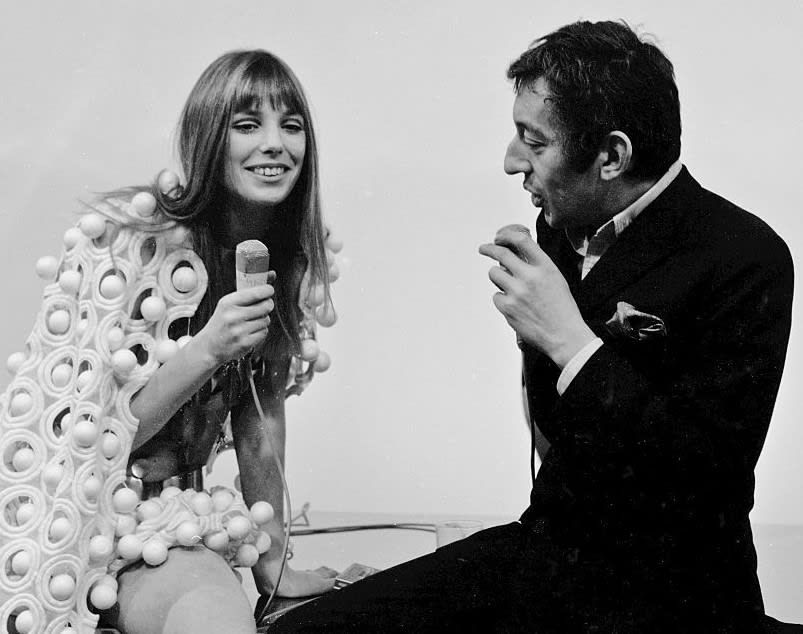
Popular music in France evolved from the emergence of jazz and chanson in the early 20th century, which flourished in the café-concerts and cabarets of Paris. Yéyé became a popular genre of the 1960s, with artists such as Serge Gainsbourg (pictured, with Jane Birkin) creating music influenced by rock ‘n’ roll and doo wop from the US. Darran Anderson’s 33 1/3 provides an account of Serge Gainsbourg’s 1971 concept album, Histoire de Melody Nelson, which is widely acclaimed for its combination of lush cinematic strings, proto-hip hop beats, and Serge’s spoken-word poetry.
Read about recent genres of popular music in France in Volume XI of the Bloomsbury Encyclopedia of Popular Music of the World, including articles on Punk and Hip-Hop in France.

At the end of the nineteenth century, a commercial song form called schlager was firmly established as the first genuine German musical genre of national importance. It was rooted in several urban musical developments including an urbanized form of folk song called gassenhauer, whose songs were frequently directed against authorities.
Following the start of the Nazi dictatorship in 1933, famous artists such as Marlene Dietrich and the Comedian Harmonists left Germany. Many Jewish musicians disappeared forever in the concentration camps, and foreign guest performances were resisted as ‘un-German’. After World War II, despite opposing political systems in East Germany and West Germany, the development of popular music and youth culture took a similar course. Beatles-inspired bands pushed at the limits of the musical mainstream established by the representatives of traditional German popular music.
In the 1970s, (West) German domestic rock music became known as ‘Krautrock’. Bands like Amon Düül, Tangerine Dream, Can and Faust created a highly experimental and influential electronic form of rock music. In particular, the band Kraftwerk, with its minimalistic sequencer-driven concept of music, proved to be of lasting influence, providing one of the roots for the electronic dance music of the 1990s.
After reunification in 1990, an outburst of creativity resulted in the emergence of techno as a distinct German version of electronic dance music. The global spread of hip-hop culture stimulated the creation of a strong German-language version of rap music represented by acts such as Die Fantastischen Vier and the all-female Tic Tac Toe. German popular music also continued to retain a distinct East German strand. One of the most famous German rock bands of the 1990s, Rammstein, was established by former members of several GDR punk bands and became a strong symbol of identity.

Volume 5 of the Bloomsbury Encyclopedia of Popular Music covers Locations in Asia and Oceania, with articles on the history and music cultures of every country, plus important cities and regions, each one with a bibliography and discography. Included is a scholarly account of popular music in Japan, exploring ancient musical traditions such as gagaku and shômyô, through to the adoption of Western instrumentation following the Meiji Revolution, and the J-pop phenomenon of the 1990s. Additionally, read the introductory chapter of Keisuke Yamada's contribution to the recently launched 33 1/3 Global Series—Supercell's Supercell featuring Hatsune Miku, in which Yamada explores the groundbreaking use of synthetic vocals in popular music.

From Guadalajara and Durango to the Chicano Music of California, Mexico’s music is a vibrant melting pot of cultures, styles and ideas.


On 27 June 2009, within ten hours of the breaking news of Michael Jackson’s death, prison warden Byron F. Garcia arranged for a music and dance tribute to the King of Pop to be performed by some 1,500 prisoners in front of a live audience of tourists and media corporations in the exercise yard of Cebu Provincial Detention and Rehabilitation Centre (CPDRC) in the Philippines.
Garcia’s CPDRC inmates’ video-recorded interpretation of Thriller takes pride of place in YouTube culture as one of the earliest, and most enduringly popular, viral videos in internet history. As an example of a post-MTV music video, CPDRC’s Thriller forms part of a growing digital-era practice of covering, sampling and remediating previously recorded music, and these kinds of intensified audiovisual aesthetics have become significant source texts in popular music culture.
Learn more in the Introduction to Dangerous Mediations: Pop Music in a Philippine Prison Video.
Discover more about the history of popular music in the Philippines in the Bloomsbury Enyclopedia of Popular Music of the World.

The music of Vietnam is influenced by both Chinese and South Asian elements. Prior to colonization, popular music entertainments included musical theatre with origins in Chinese opera, folk theatre and chamber music, as well regional folk song styles. After colonization by the French in the nineteenth century, Western melodies and instruments such as the guitar grew in popularity.
In the years following the nation’s division in 1954, government in the communist North controlled everything from musical training to broadcast while in nationalist South Vietnam, popular music was largely left to the free market, with an influx of US troops and money. More widely, US involvement in the Vietnam War which followed was an enduring influence on western artists including Bruce Springsteen and The Clash.
Following post-war reunification, the communist victors sought to ban and confiscate all cultural vestiges of the former southern regime. Many singers and songwriters fled Vietnam, moving primarily to France, Australia and the United States. By the mid-1980s Vietnam’s government began to relax its control on culture, with tea rooms and karaoke establishments spread through the city of Hô Chi Minh.
Since the late 1990s, some Vietnamese commentators have expressed concern about the influence and popularity of overseas Vietnamese music, Hong Kong music, US music and, more recently, Thai music on the marketplace. In contrast, however, to many years of hostility between the Vietnamese diaspora and those residing in Vietnam following 1975, there has generally been a growing interaction between the native and diaspora musics and music industries.